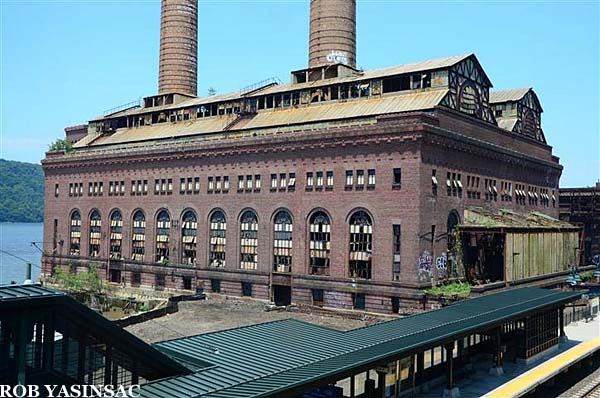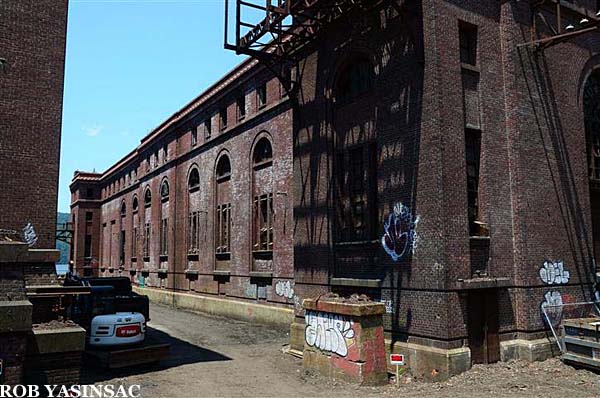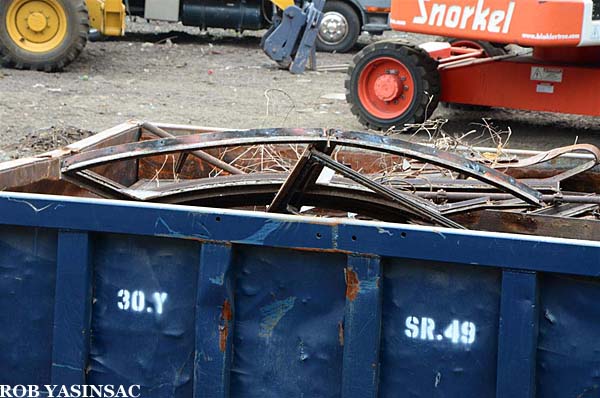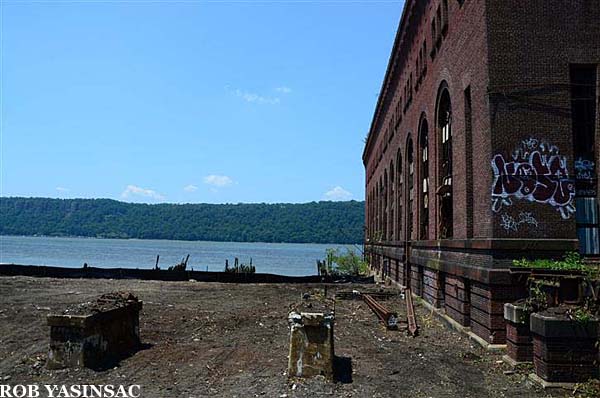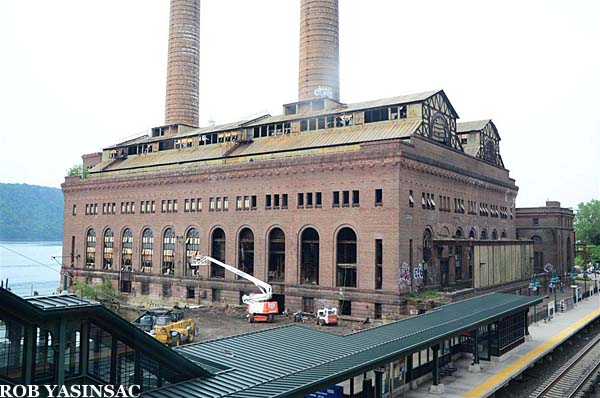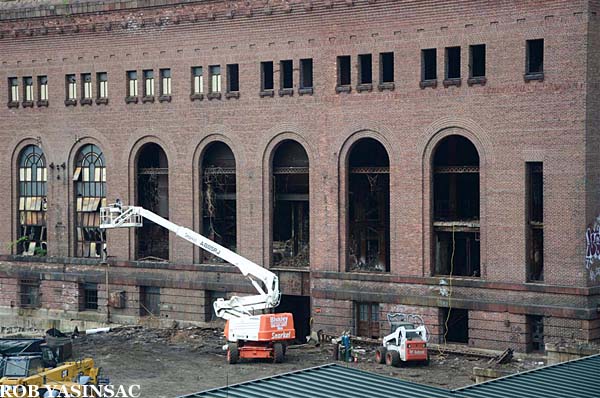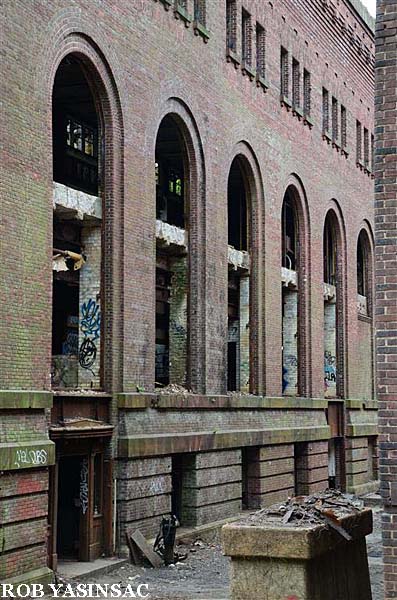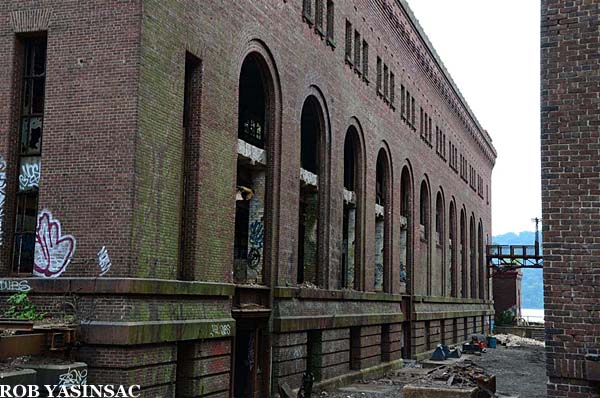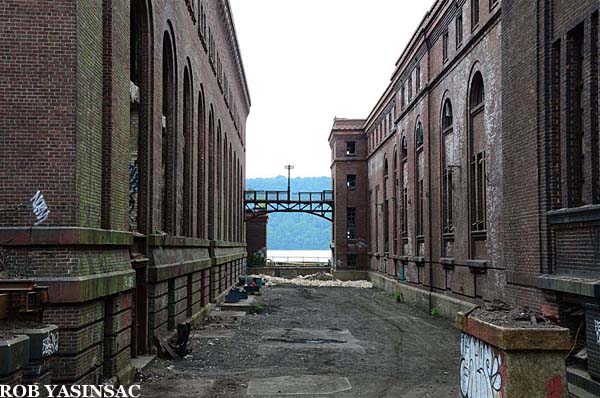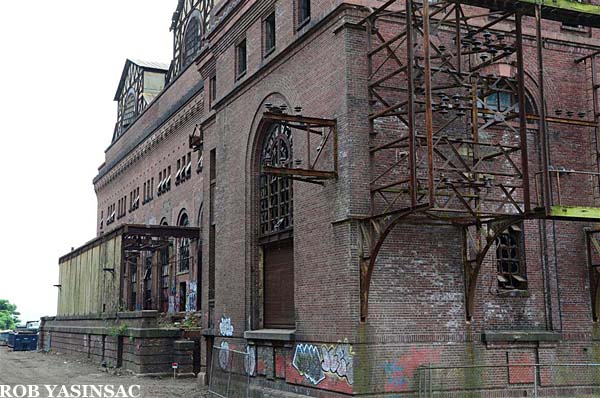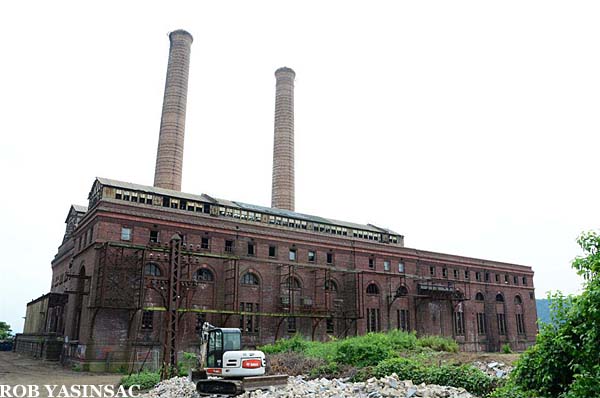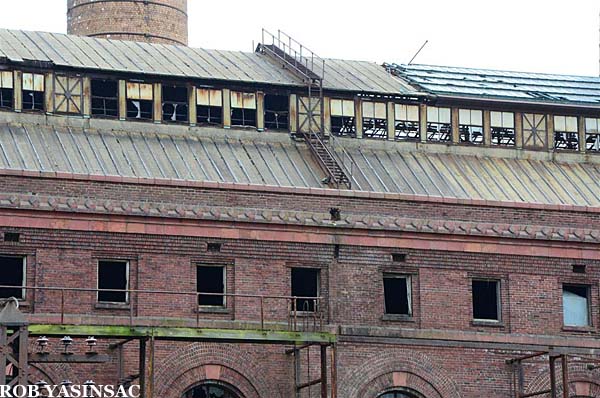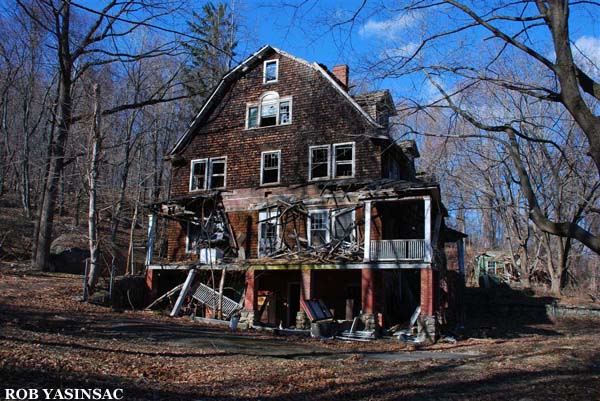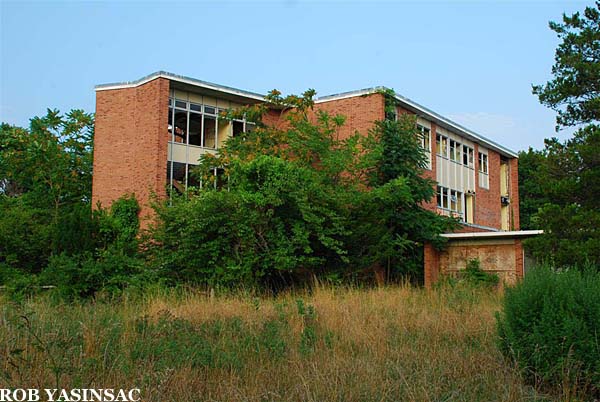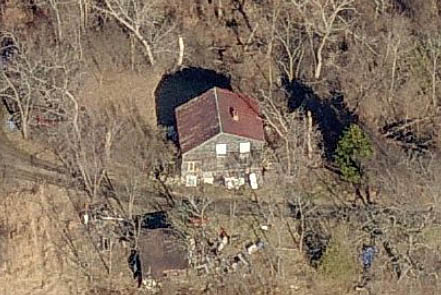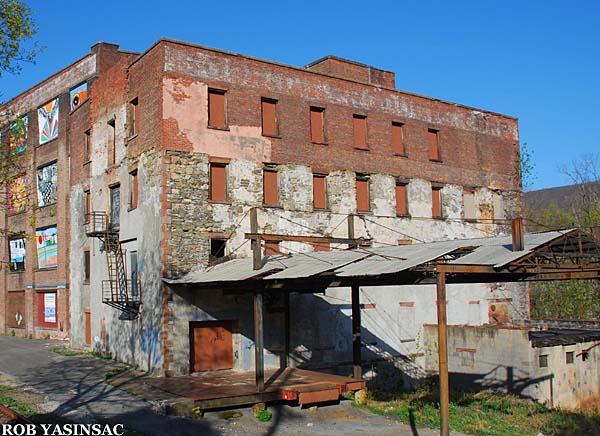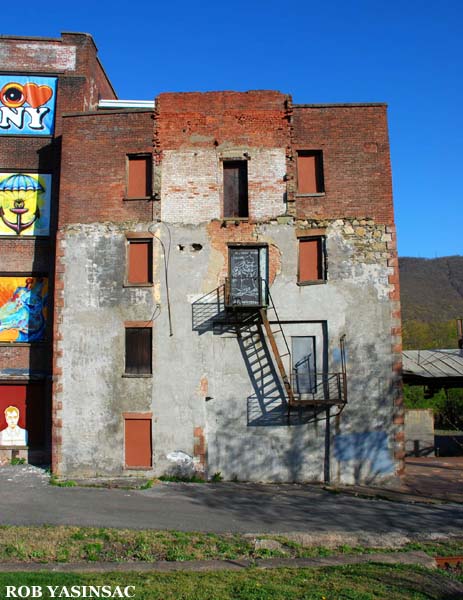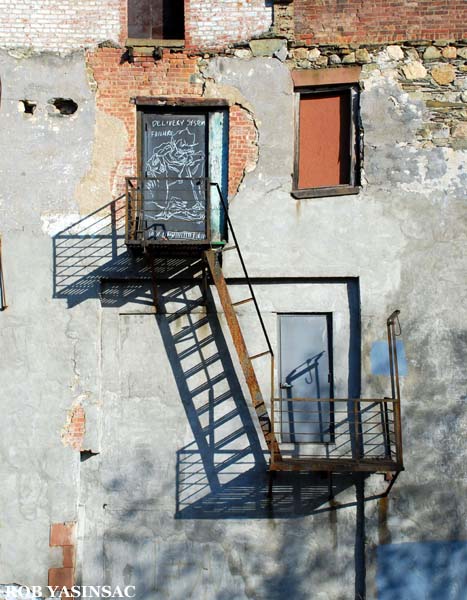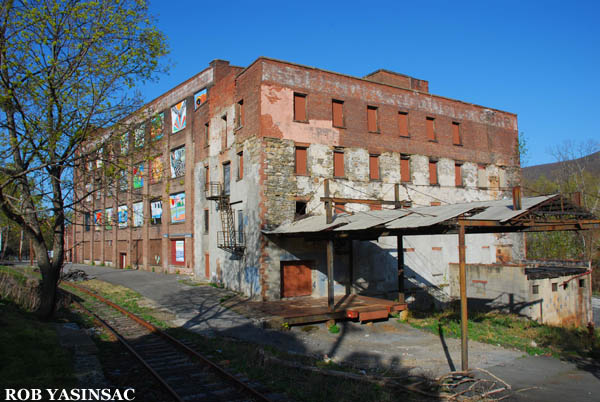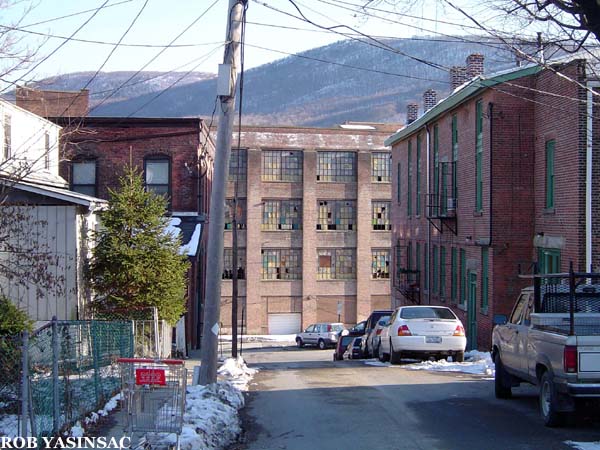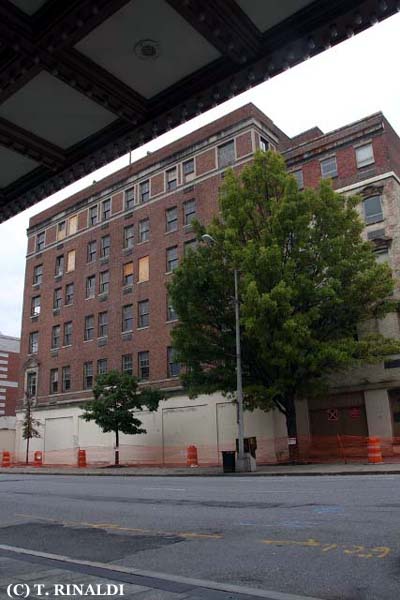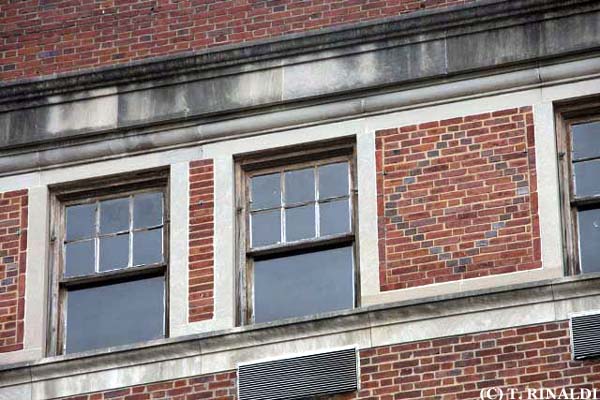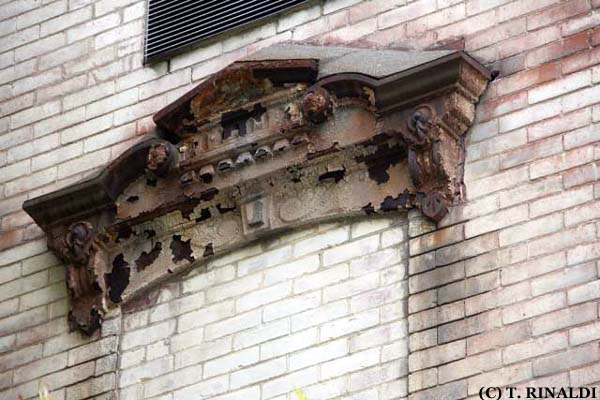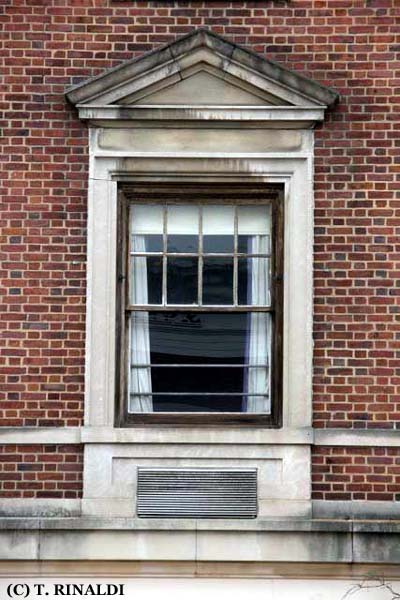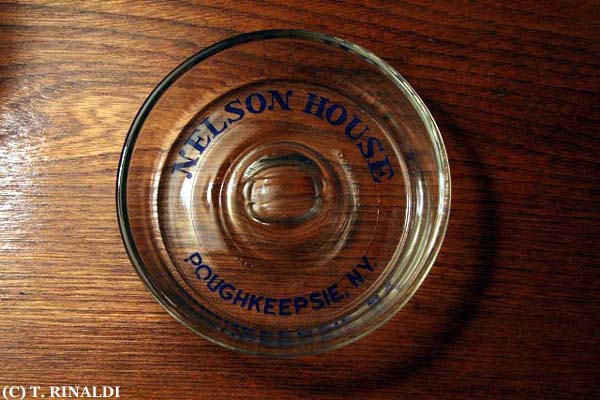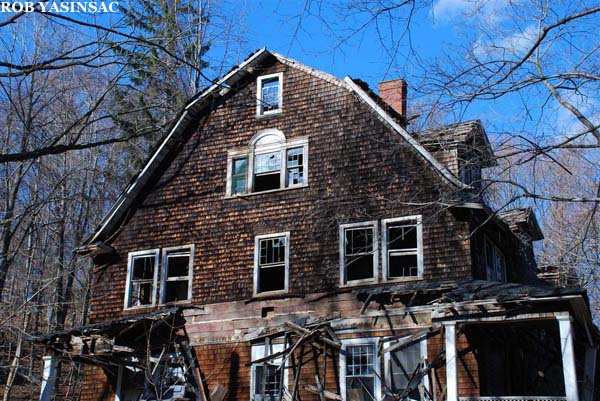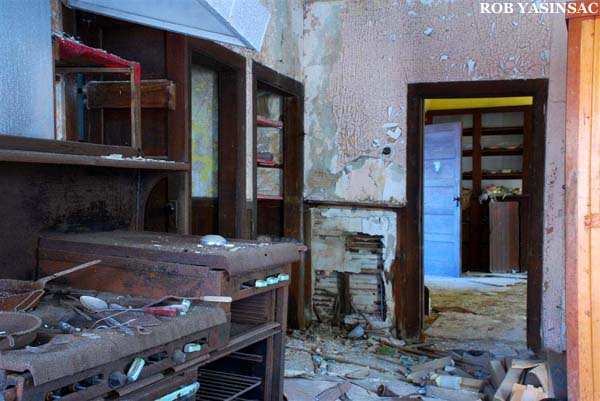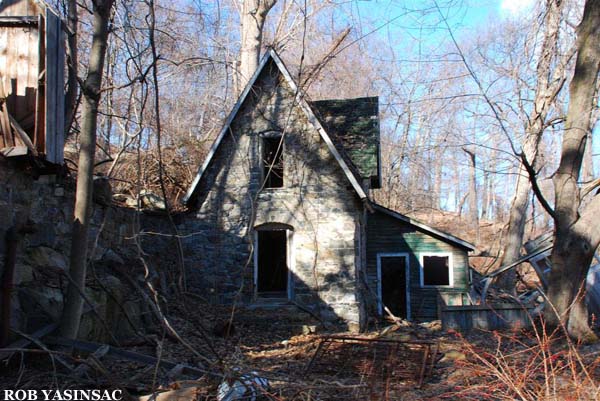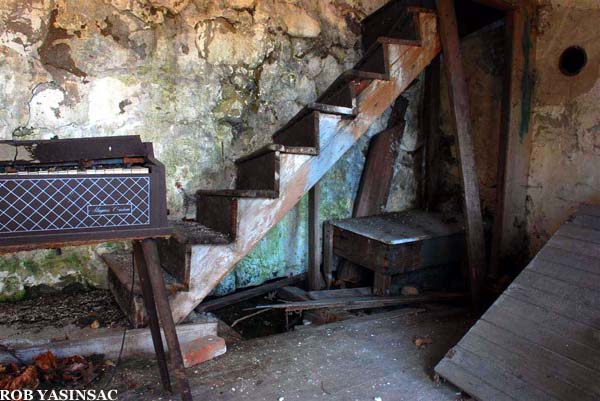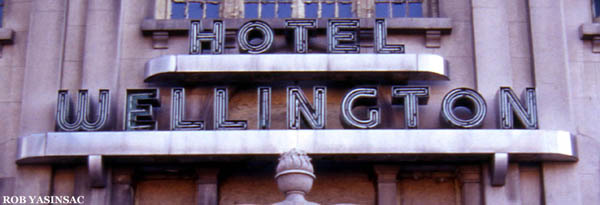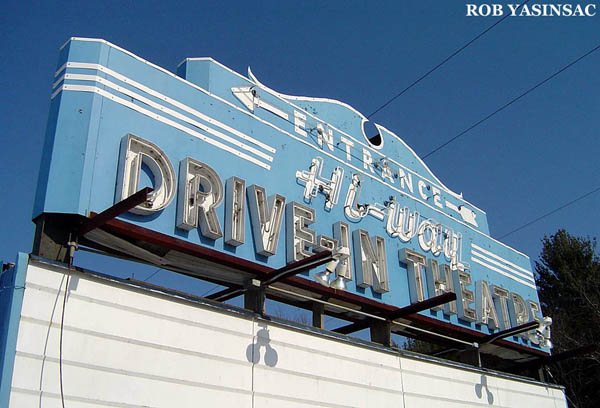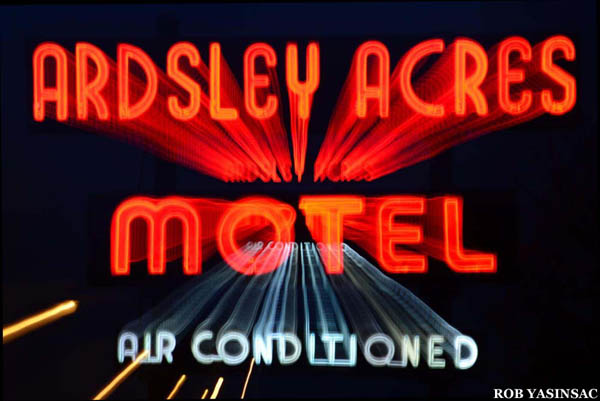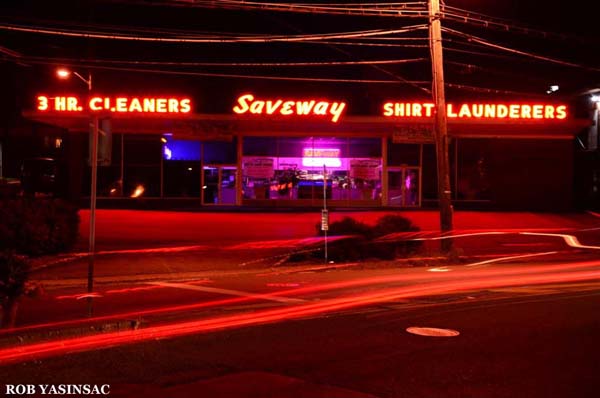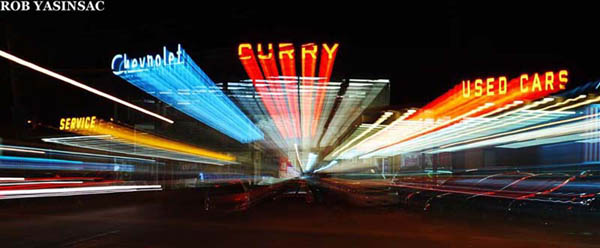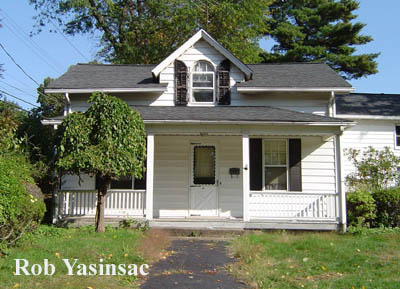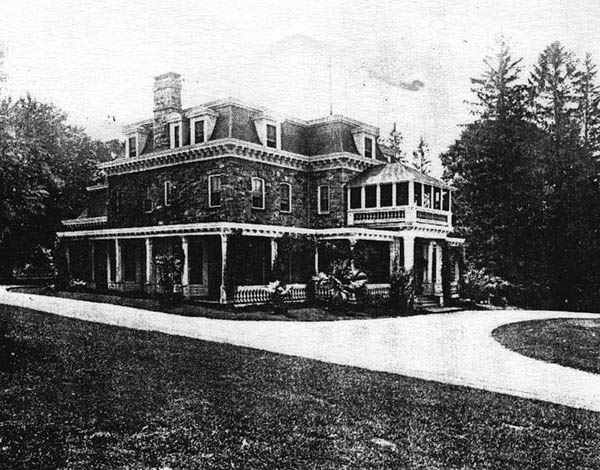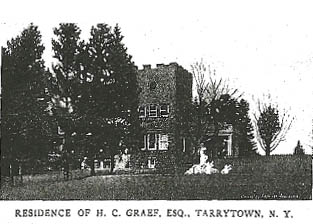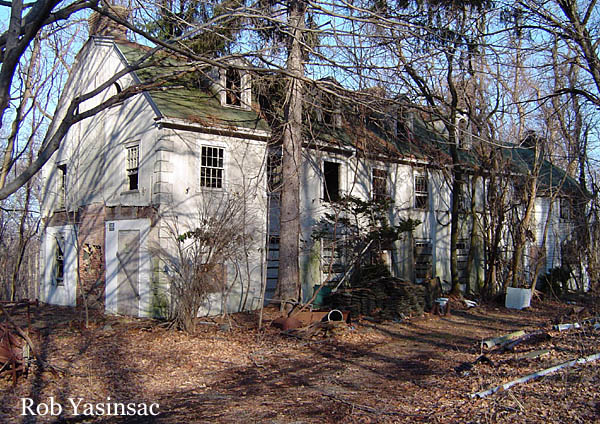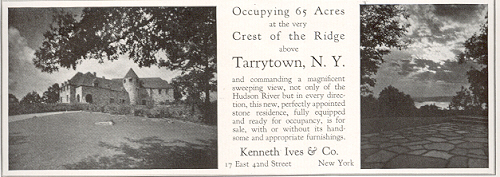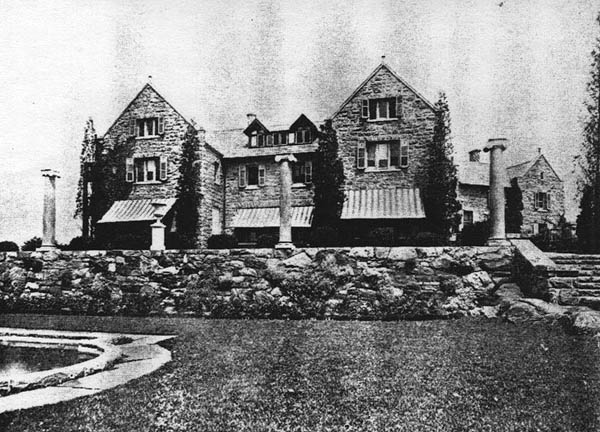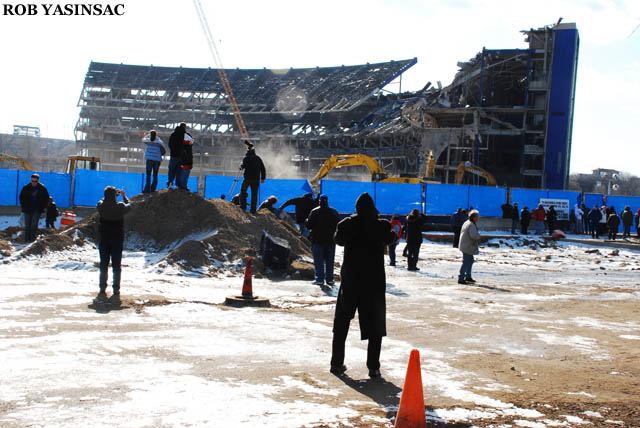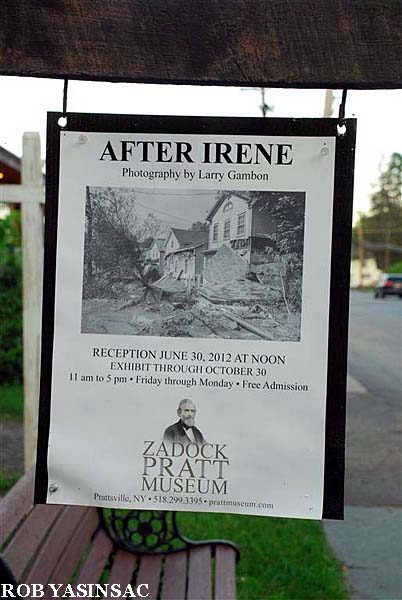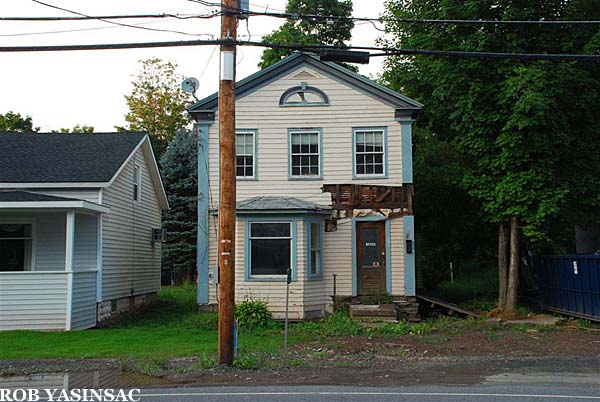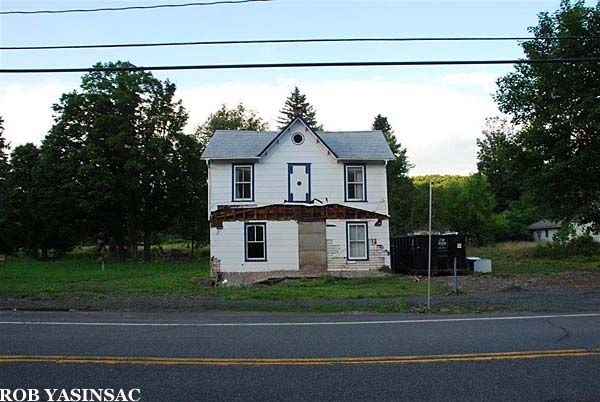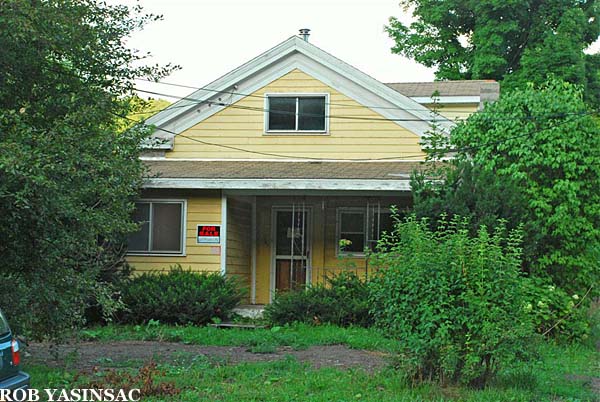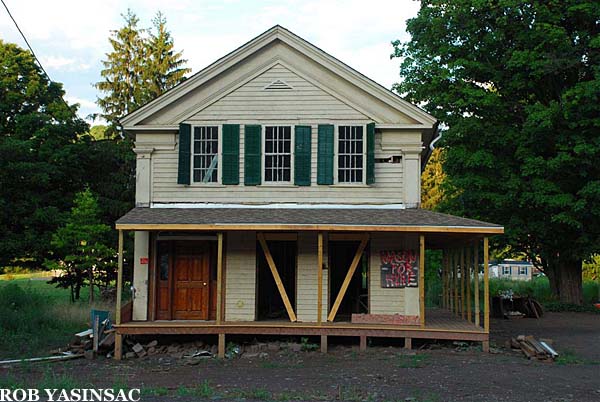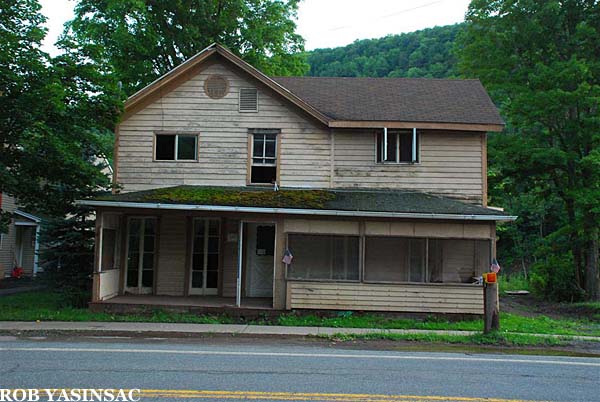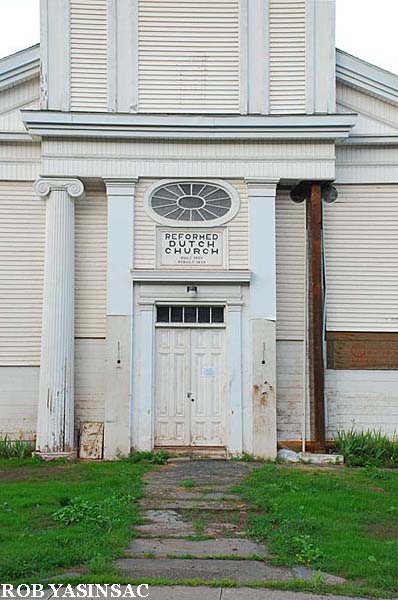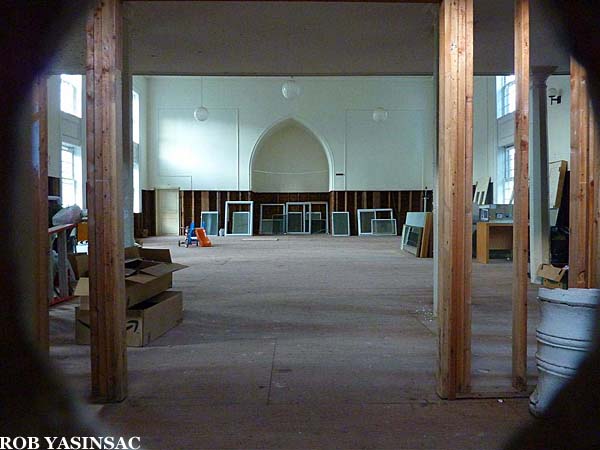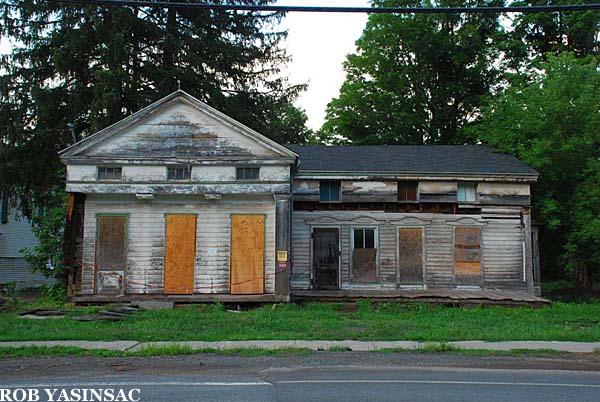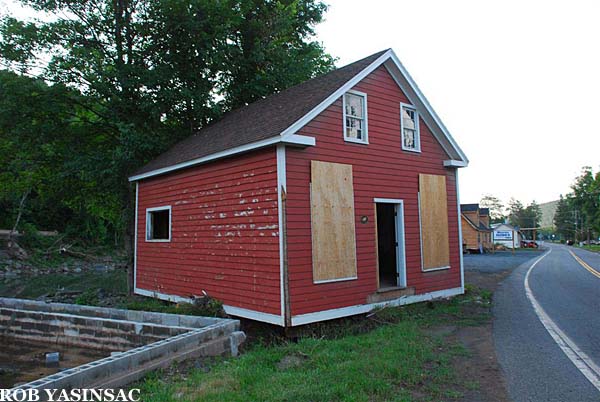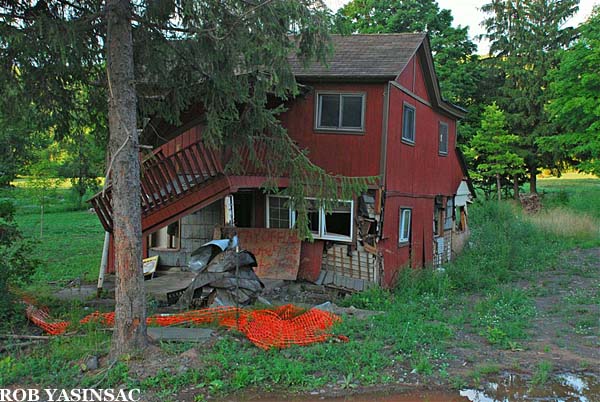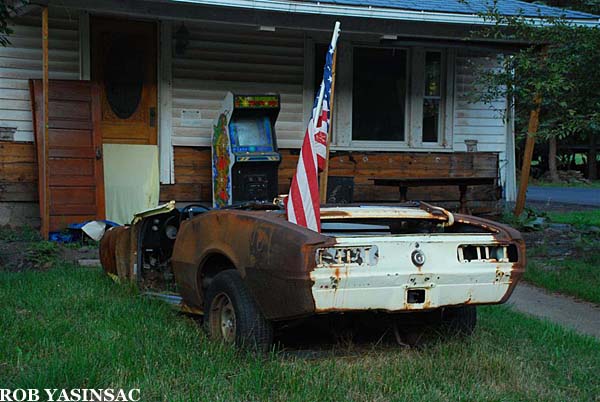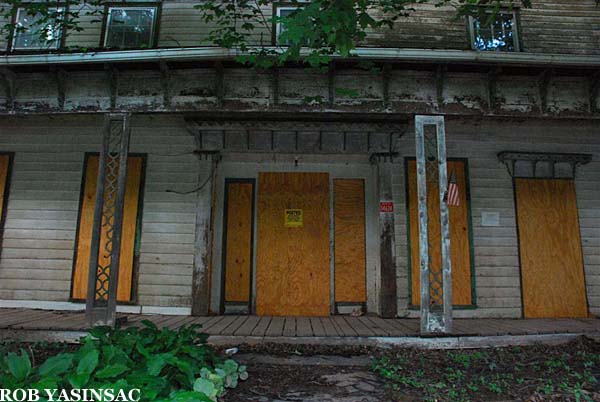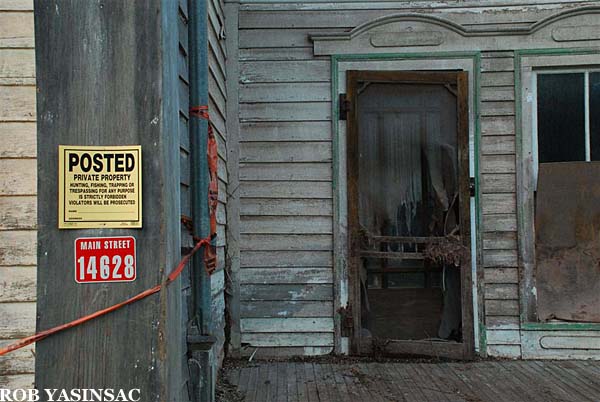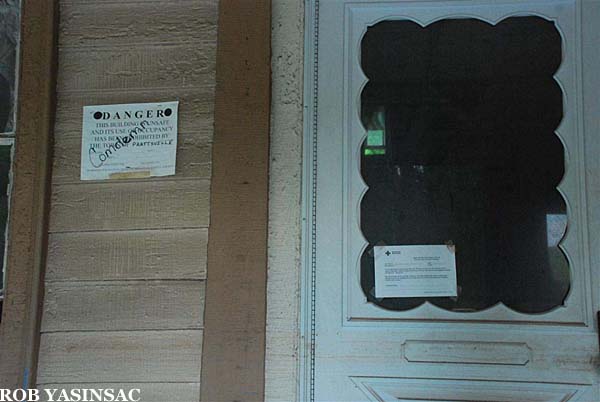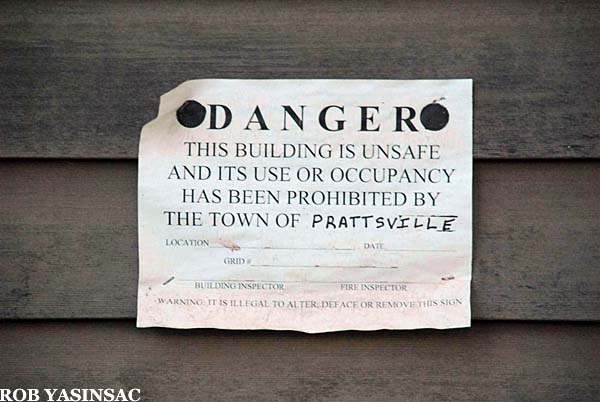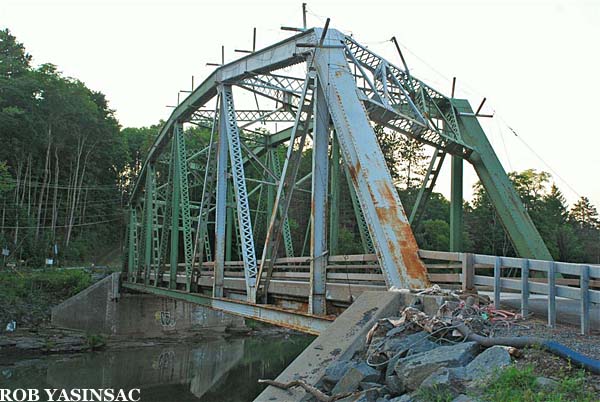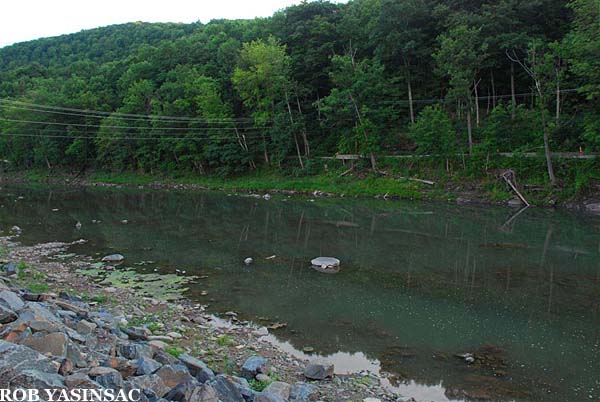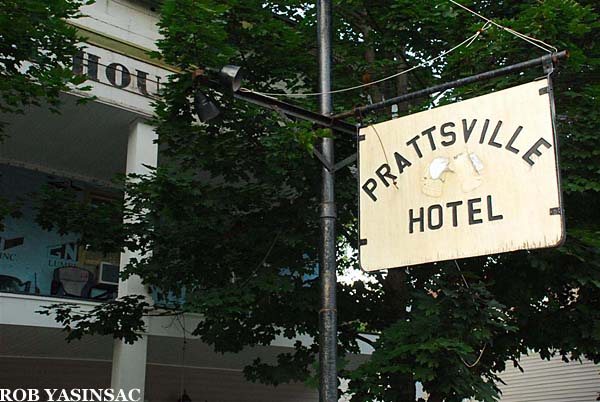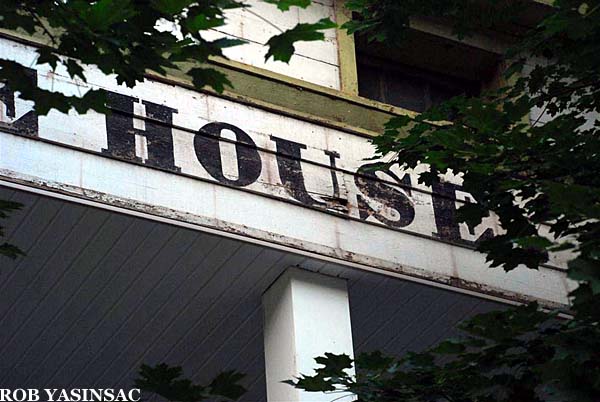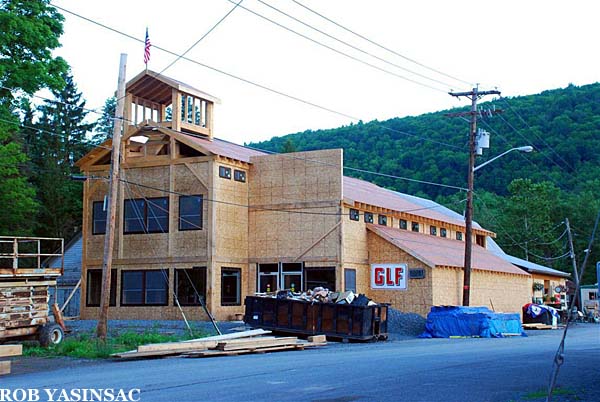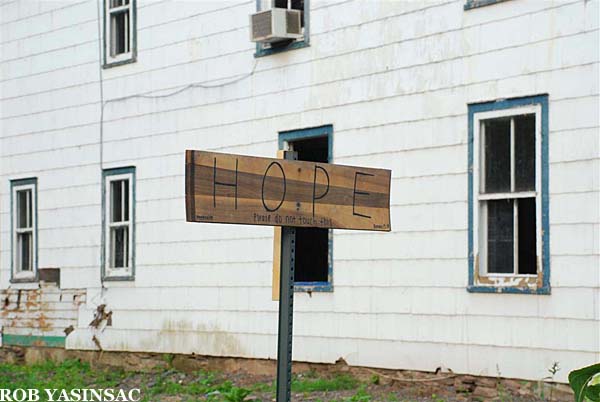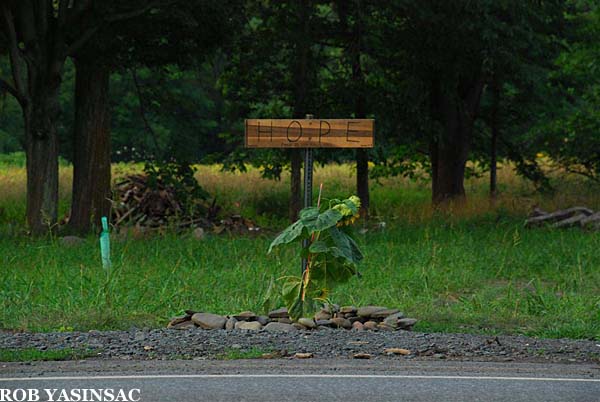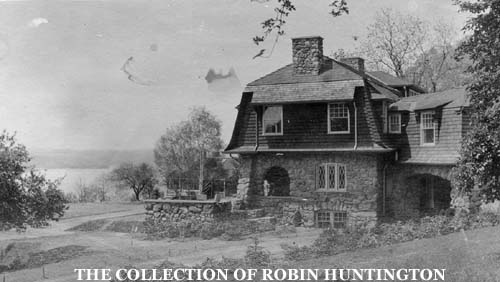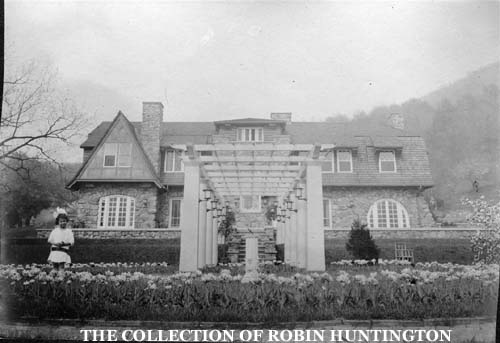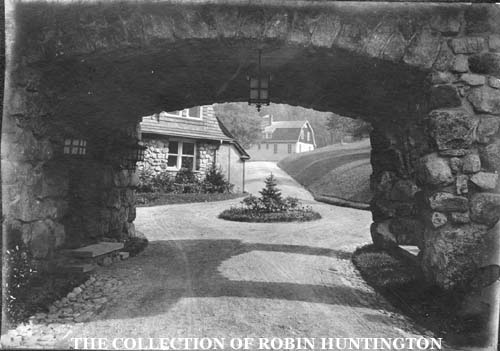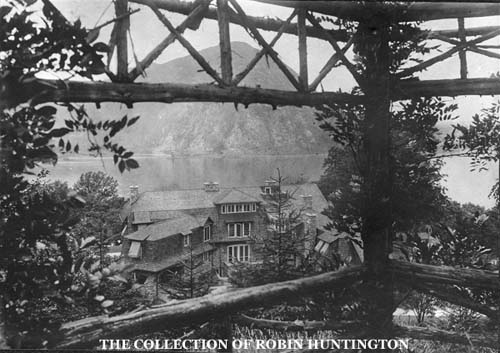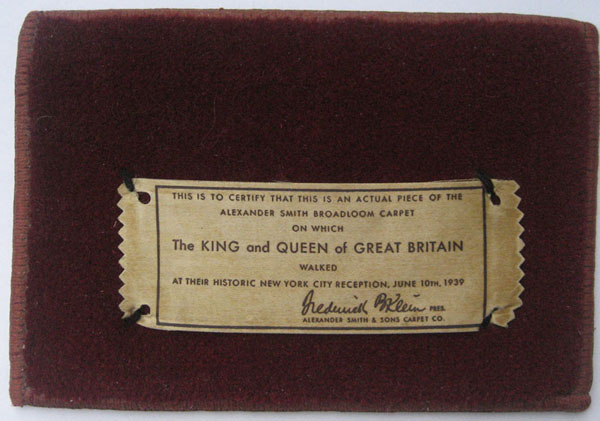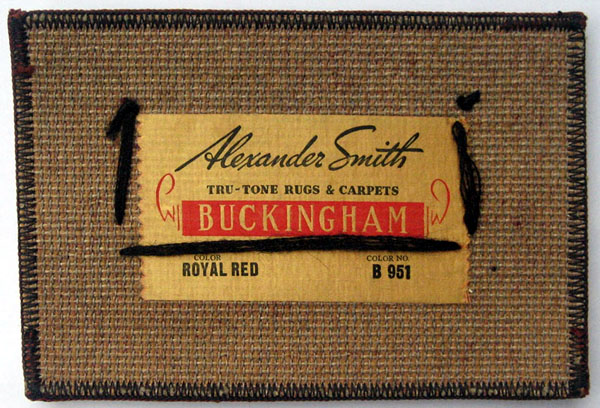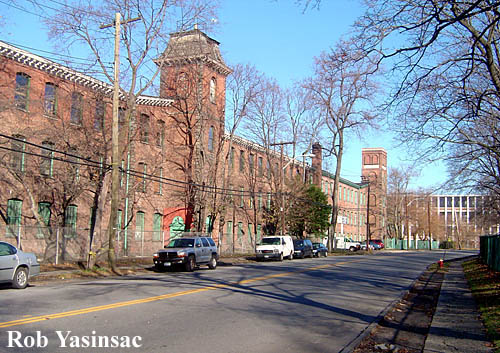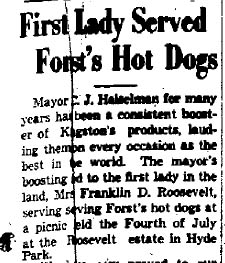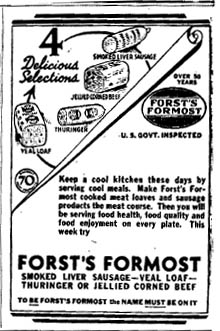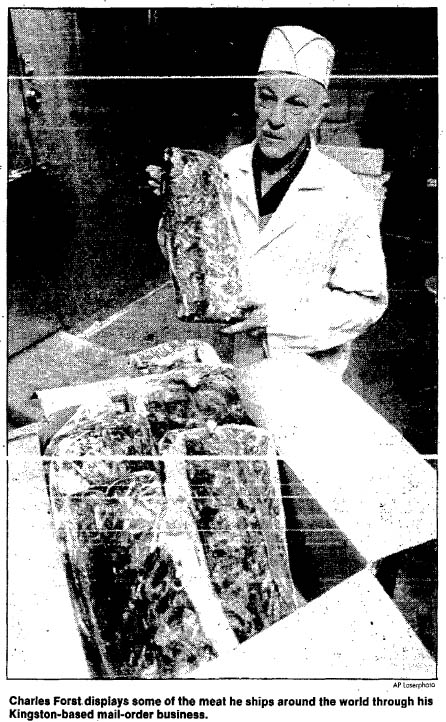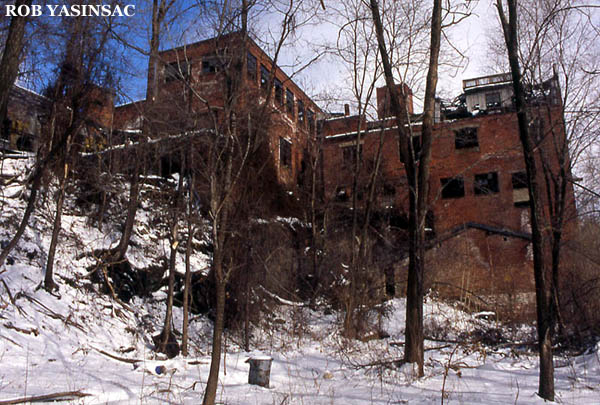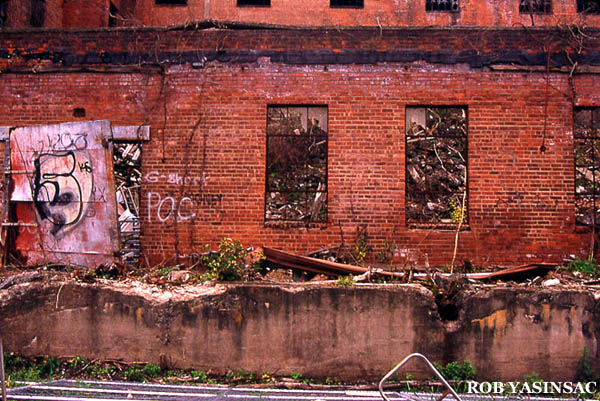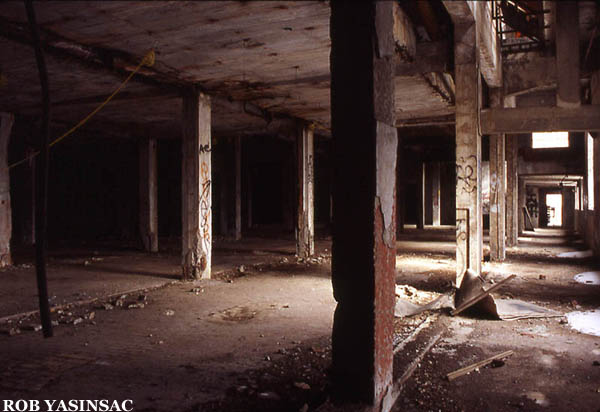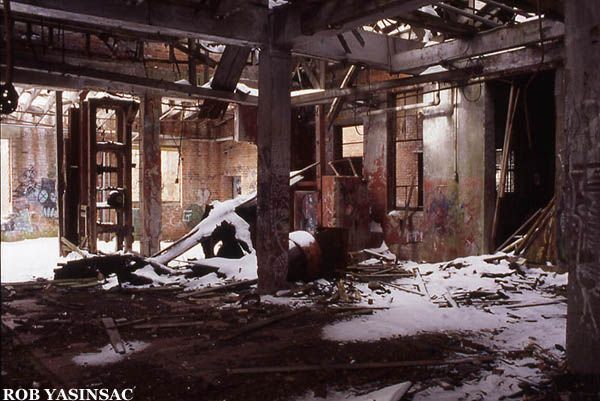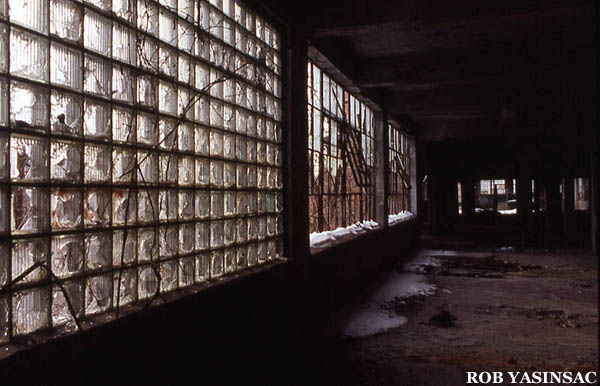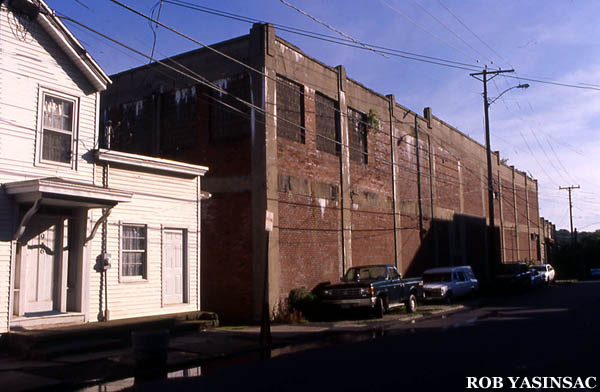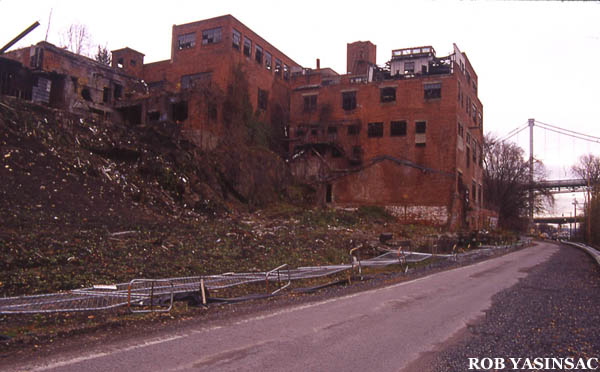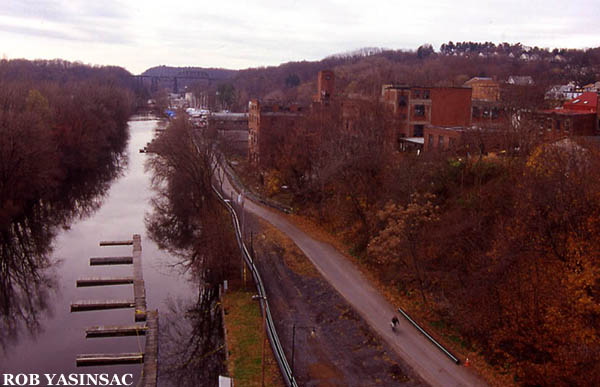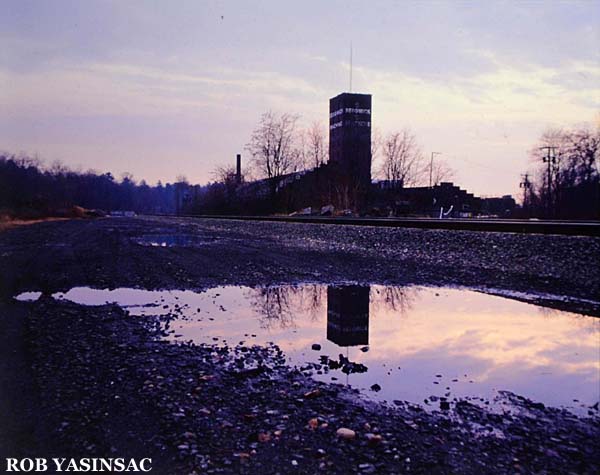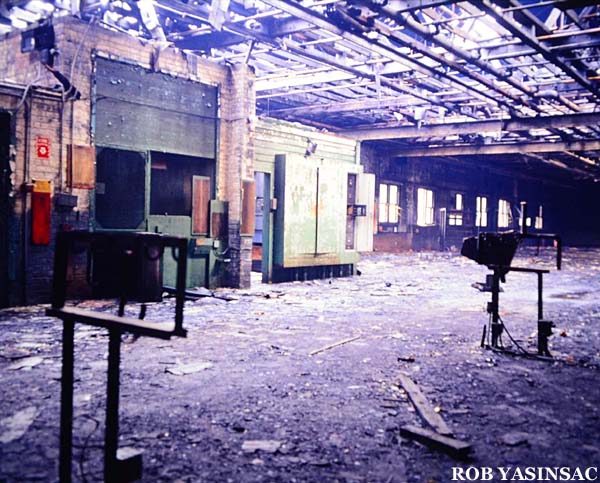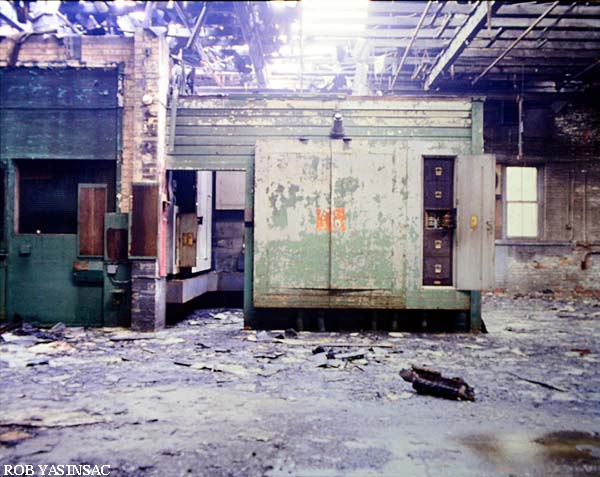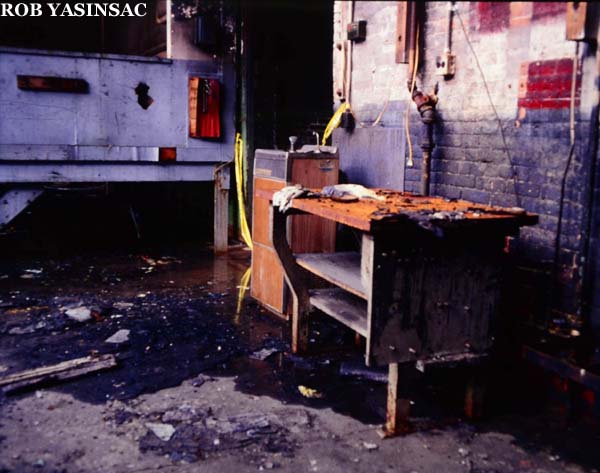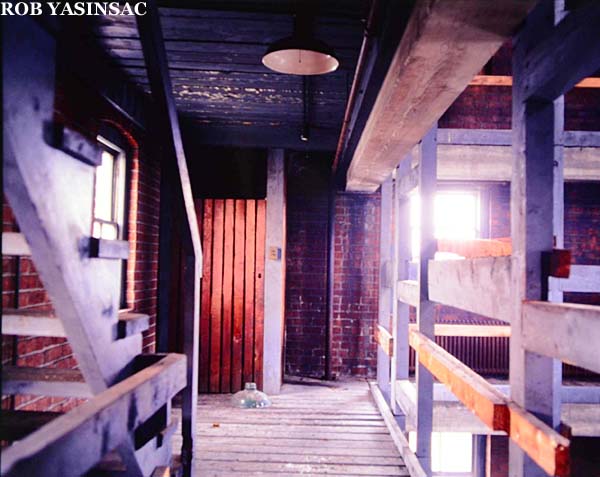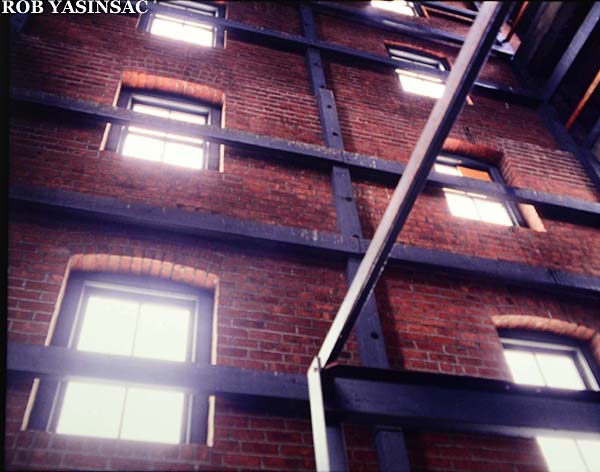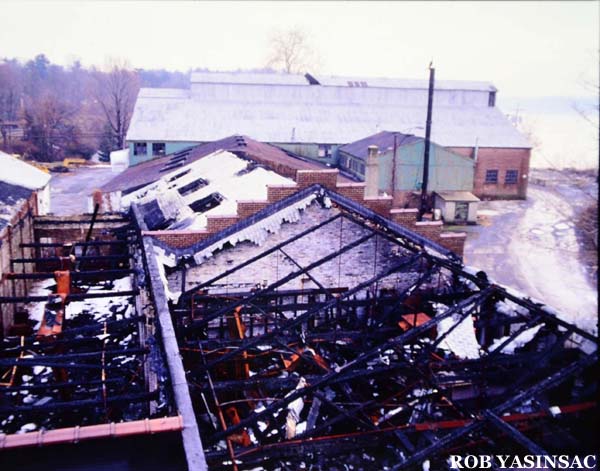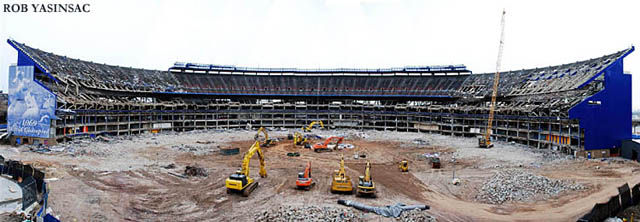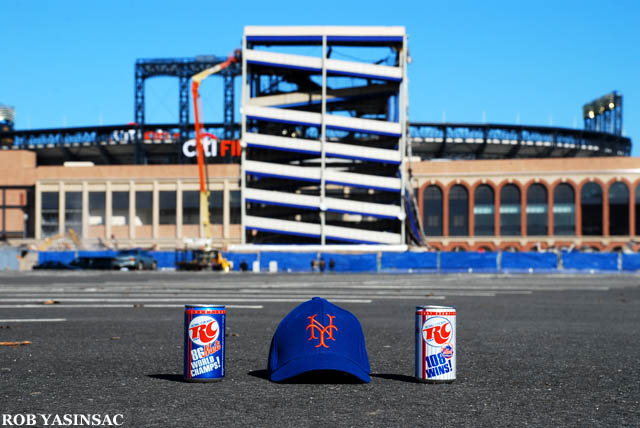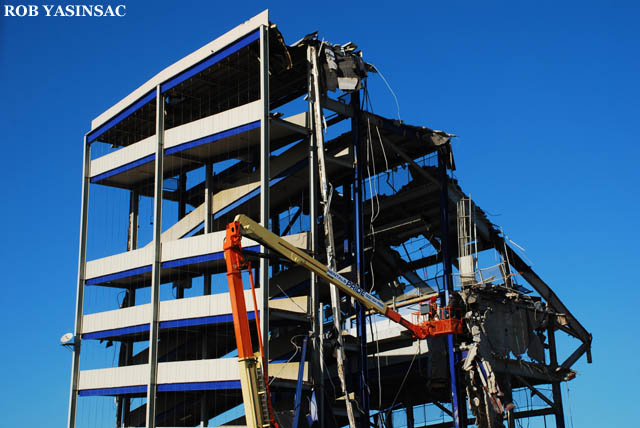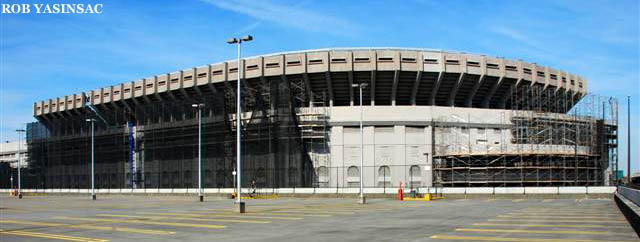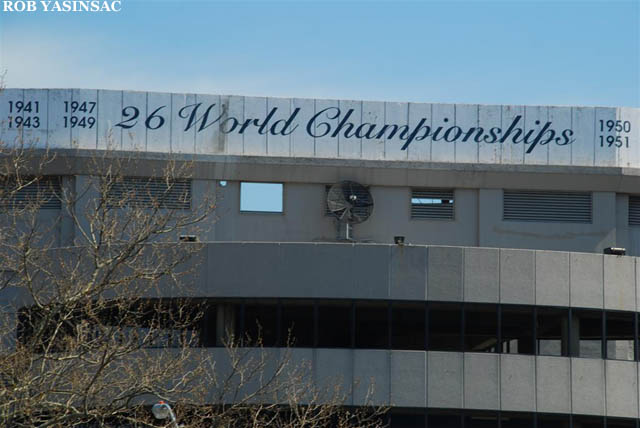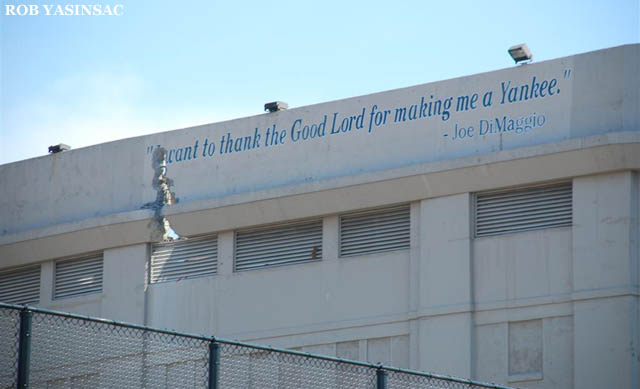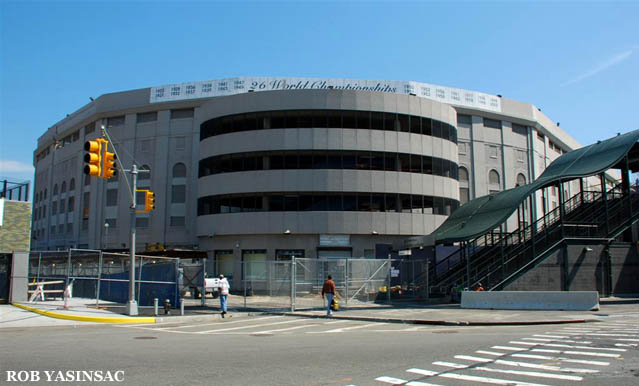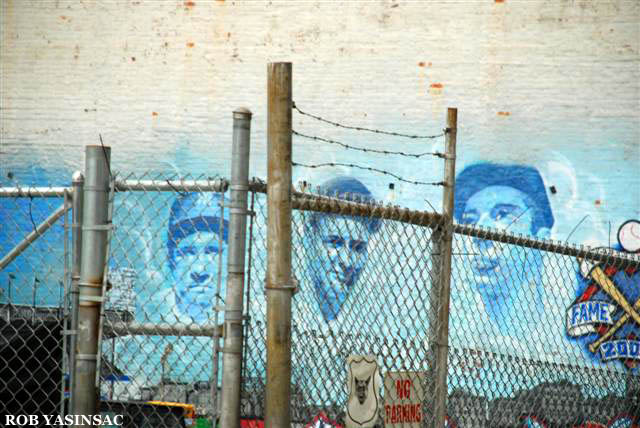Last month after one of my tours at Bannerman’s Castle, a visitor (a recent transplant from the Midwest to New York City) told me that he wanted to learn more about this Hudson River Valley that he and his friends recently discovered and he asked for some book recommendations. He specifically requested something like a biography of Henry Hudson, or a good overall survey of the Hudson’s history.
I didn’t know if there was such a book specifically about Hudson himself and his voyage up river that now bears his name (although one of Hudson’s crew kept a journal which has been published numerous times.). But the best book on early-European Hudson River, and New York, history, is Russell Shorto’s Island at the Center of the World. Shorto illuminates the diverse individuals who came here not unified for political causes or by religious beliefs, but who came here to make some money for the Dutch West India Company. The book is populated by historical persons famous (Peter Stuyvesant) and forgotten (Griet Reyniers, a prostitute and later leading citizen of New Amsterdam) and by people whose stories were both amazing and sad (Harmen Meyndertz van den Bogaert, a young man who volunteered to explore the Mohawk Valley in the deep of winter snow to find, and reestablish crucial trading connections with, Native Americans. When his fellow Europeans learned he was gay, they imprisoned Harmen at Fort Orange. He escaped, but fleeing across the frozen Hudson River, he crashed through the ice and drowned.)
I think the vignettes presented in the book would form the basis for a great movie, but I doubt it will ever be made – there is no singular love story running through it, and no one involved really wins. Even the DWIC’s surrender of Manhattan to England came without a single shot having been fired. That would not make for much of a climactic film-sequence. But the story does have a hero, and he who comes off best in Shorto’s telling of the founding of New York is Adriaen van der Donk, the Jonkheer of Yonkers. Van der Donk was “a passionate young man who dreams a vision of Manhattan, and America, settled by a mix of peoples, and one day growing in might to surpass the old country… He leads the movement for political reform, which results in his imprisonment, release, and journeying to The Hague to push the cause of the first Manhattanites.” His challenges to “Stuyvesant’s rule result(ed) in the chartering of the city of New Amsterdam (an event New York City still regards as the moment of its founding) and …. a lasting imprint on American history.”
I could easily go on, but I need to get back to the main topic of this post, which is not exactly a direct response to my visitor at Bannerman’s Castle. For this post I chose to focus on those books that directly inspired my interest in ruins and informed the approach that Tom Rinaldi and I took towards writing about these sites. On my website I have posted a partial Hudson Valley Ruins bibliography. On that list are books that cater to those who are interested in the oldest homes of the Hudson Valley, and about the conservation movements to protect the Palisades and the Hudson Highlands, and books about specific sites or industries. Almost all of these books reference some ruin or another that Tom and I photographed, and were and still are essential resources in our libraries. A few of these books were highly influential to me personally, and I think would also serve well to guide one for whom the collective 150+ miles of Hudson River shoreline from New York to Albany are largely a mystery.
Also recently, I had the opportunity to relocate and reset the books on my book shelf. There are four segments of the shelf that contain mostly Hudson River books and books about ruins and abandoned buildings.
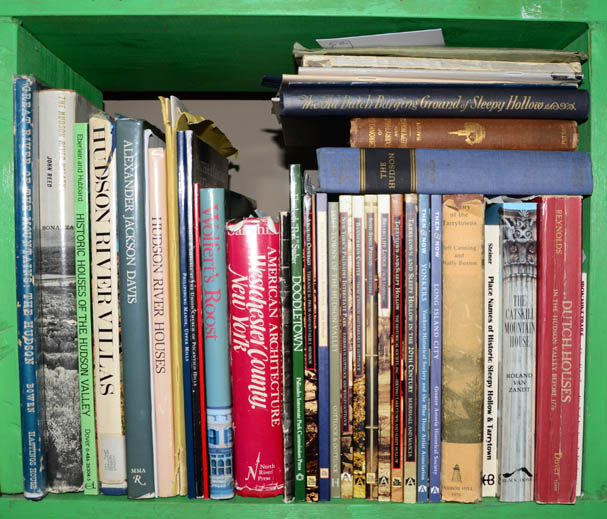
The main shelf with many of the most-referenced books.
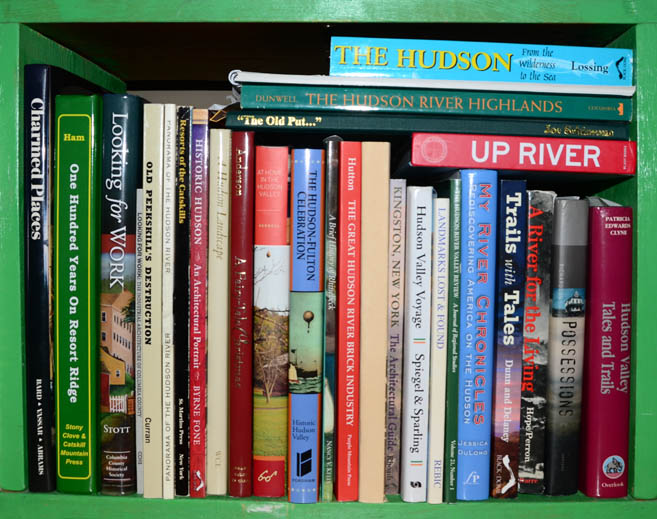
A bunch of other great Hudson River books.
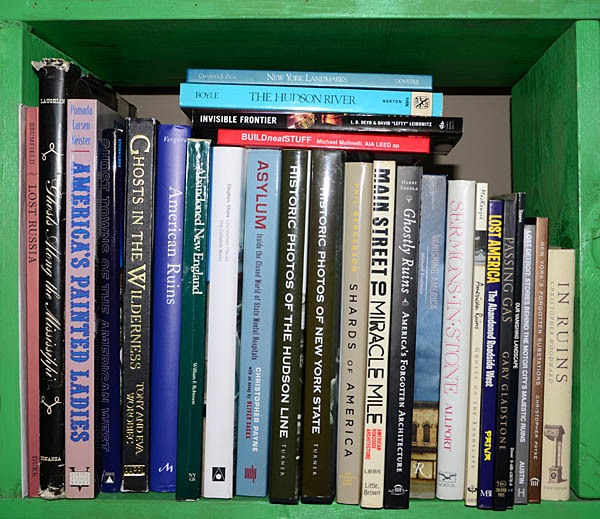
Most of these books are about ruins in other parts of the country.
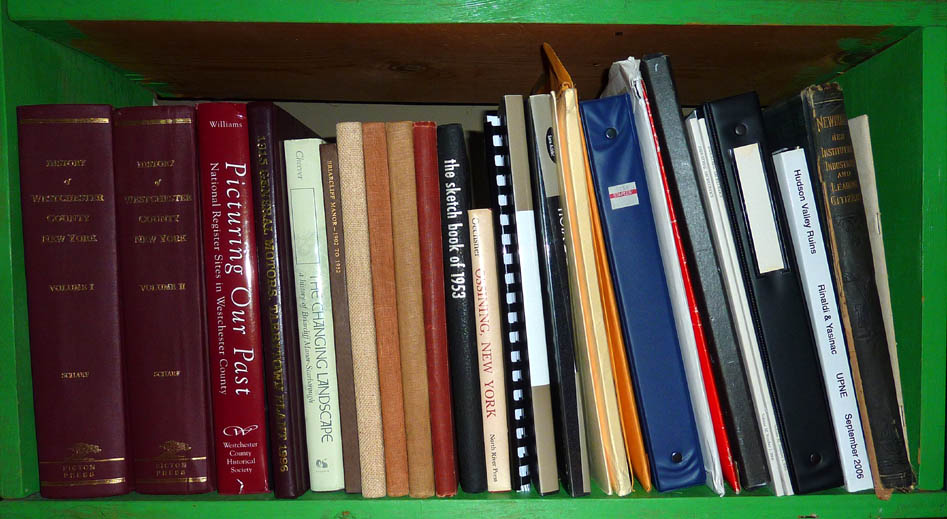
On the left are some seriously heavy tomes by the Westchester County Historical Society; at center are Briarclif Manor histories and yearbooks of the Edgewood Park School (all about Briarcliff Lodge, which was the subject of my first book); the righthand side of this shelf includes copies of the Hudson Valley Ruins book proposals (printed on paper purchased at an office supply store built on the site of a former Hudson Valley ruin), a copy of the manuscript with notes provided by Wint Aldrich, and a rare paperback uncorrected-proof of Hudson Valley Ruins. Some day the embryonic HVR pieces will go to auction to fund my retirement (I wish.)
Okay, on to the list.
_______________________________________________________________________
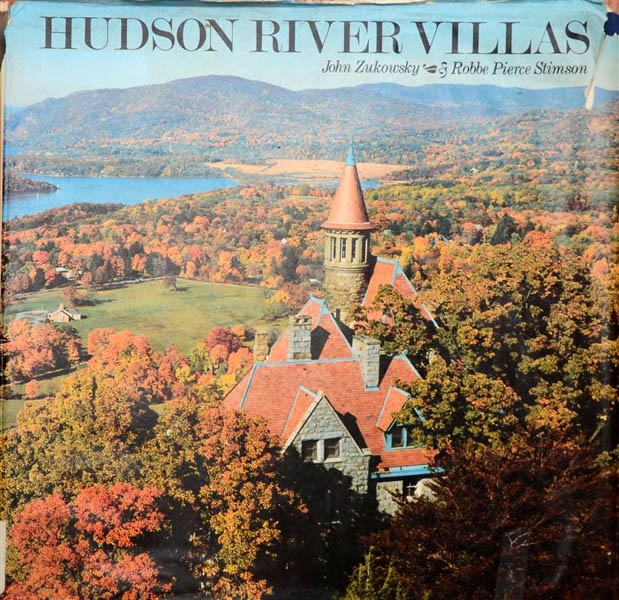
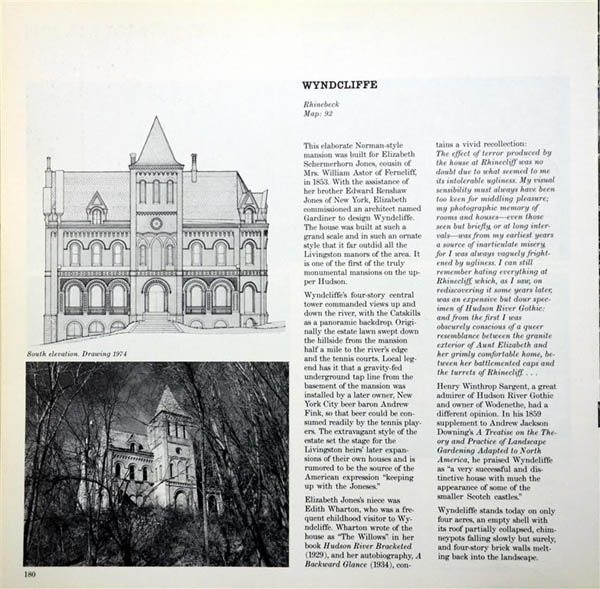
Hudson River Villas. ~ Zukowsky, John and Robbe Pierce Stimson: Rizzoli International Publications, 1985.
Current price range on www.abe.com: $16.82~$750.00.
This is where Hudson Valley Ruins began, for me at least. In the 1994-95 school year I was a high school senior with a general interest in photography. There had always been cameras in our house and I often turned it up at the stars at night, and occasionally I tried shooting some sporting events too. I also had this growing interest in the old buildings of Irvington and Tarrytown. Perhaps sensing an opportunity to inspire me to find a photographic subject I could focus on and develop a dedication to, my photography teacher Thom Johnson lent me his personal copy of Hudson River Villas. The book included photographs of all the famous local historic houses – Sunnyside, Lyndhurst, Philipsburg Manor, Kykuit, as well as long-lost mansions and estates of which I found remnants in the woods off the Old Croton Aqueduct. It even showed some outright abandoned mansions! One was this place up in Rhinebeck, way up the river, called Wyndclyffe, an exotic-looking and mysterious-seeming ruin. A few years later a fellow named Lee Richey posted photographs of Wyndclyffe to the internet, an update to the now-decade-old-plus images that appeared in Zukowsky and Stimson’s book. And then, armed with the knowledge that this ruin and others in the book were still standing, off Tom Rinaldi and I went, to Wyndclyffe, and the Hoyt House, and to Bannerman’s Castle, which was included in the book even though it wasn’t actually a villa or house. Long out of print, Hudson River Villas remains my favorite among the many books devoted to the mansions and great estates of the Hudson Valley.
John Zukowsky wrote a fair amount about the Hudson River estates during his tenure at the Hudson River Museum in the mid-1970s. He later joined the Art Institute of Chicago and returned to New York in the 2000s when he was the curator of the Intrepid.
I’ve rarely seen copies of this book for less than two hundred dollars, so to see some available for less than fifty dollars is outright theft. Get it while it’s good!
Sample text:
“Wyndclyffe stands today on only four acres, an empty shell with its roof partially collapsed, chimneypots falling slowly but surely, and four-story brick walls melting back into the landscape.” (Page 180).
_______________________________________________________________________
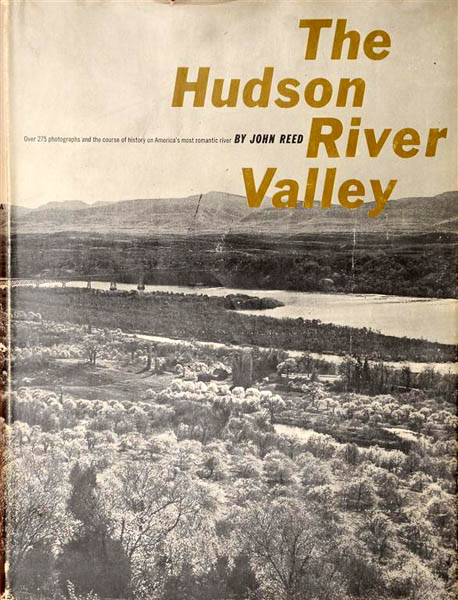
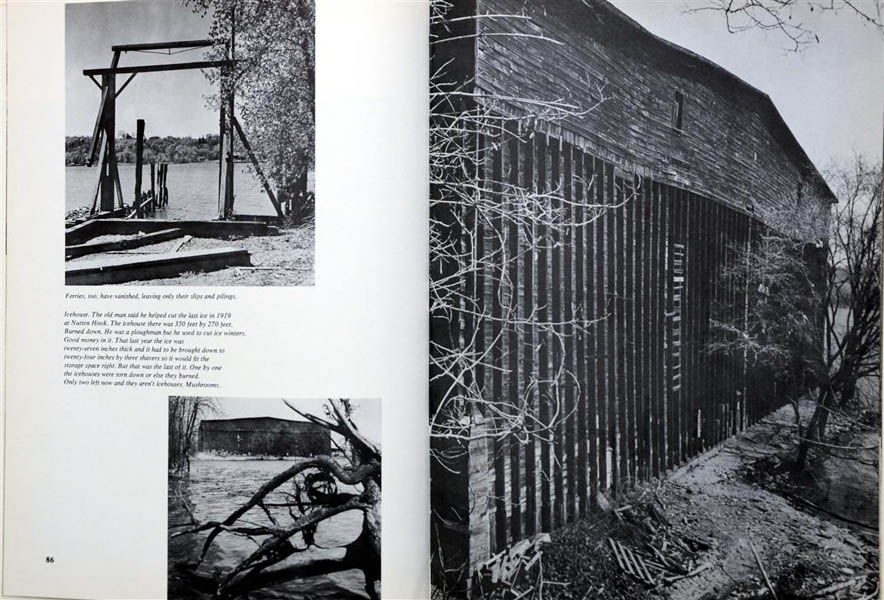
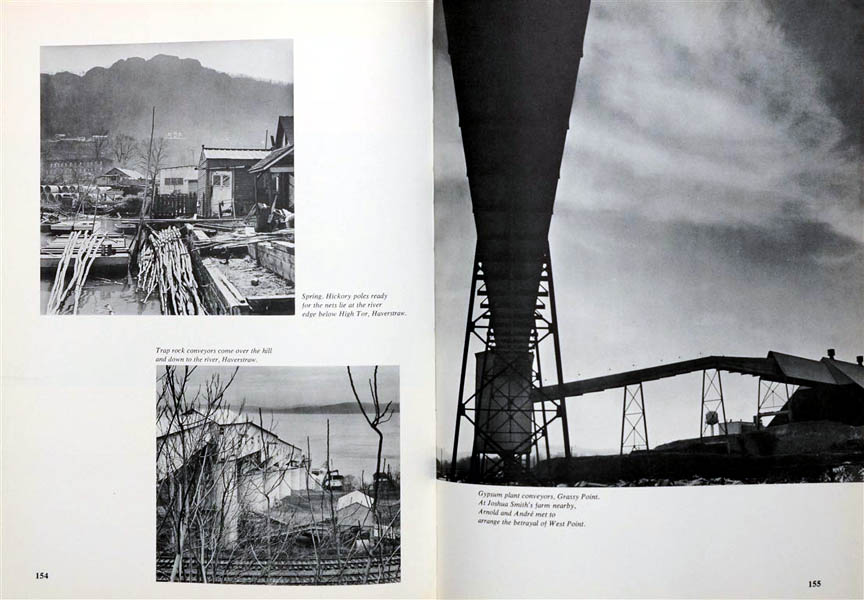
The Hudson River Valley. ~ Reed, John.: Bonanza Books, 1960.
Current price range on www.abe.com: $2.00~$33.00.
In 1960, John Reed (No, not Warren Beatty’s John Reed), published a visual chronicle of the Hudson River, its landscape, and its buildings from the Adirondacks to New York City. Famous pieces of architecture are included here as are churches, institutions, factories, and views of the river framed by Main Streets, farm fields, and bridges. The photographs are almost entirely devoid of people however much they still populated the river and the farms and the buildings. Although it is clear from the subject matter that John Reed’s Hudson River was in a state of decline at the time, not all was abandoned. The last icehouses to dot the Hudson’s shoreline were still standing and in use for growing mushrooms, a few brickyards were still active, and the paper mills on the Esopus Creek were still spewing thick black smoke into the crisp winter air in Saugerties. This book made us want to see if there might still be anything left of old ferry slips up river, as if the forty years interval between John Reed’s time and our time was more like ten years, or if that passage of time was kind enough to allow the last vestiges of the old ways of the Hudson to survive in recognizable form. Additionally, the photographs are outstanding and I never tire of looking at them.
I don’t know much about John Reed except that he was involved in the art scene in Long Island, probably through the early 1970s at least. I have no idea what he did before The Hudson River Valley and I am curious to know how he came to undertake the project that resulted in this book.
Sample Text:
“Icehouse. The old man said he helped cut the last ice in 1919. at Nutten Hook. The ice house there was 350 feet by 270 feet. Burned down. He was a ploughman but he used to cut ice winters. Good money in it. The last year the ice was twenty-seven inches thick and it had to be brought down to twenty-four inches by three shavers so it would fit the storage space right. But that was the last of it. One by one the icehouses were torn down or else they burned. Only two left now and they aren’t icehouses. Mushrooms.” (Page 86).
_______________________________________________________________________
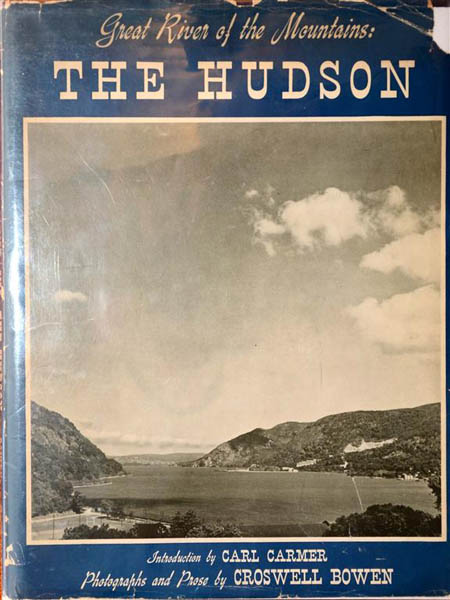
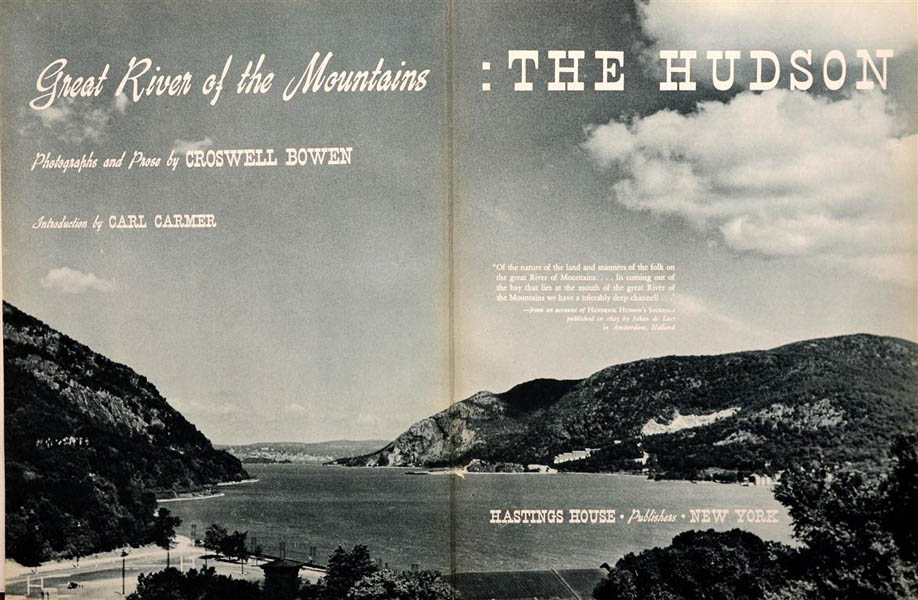
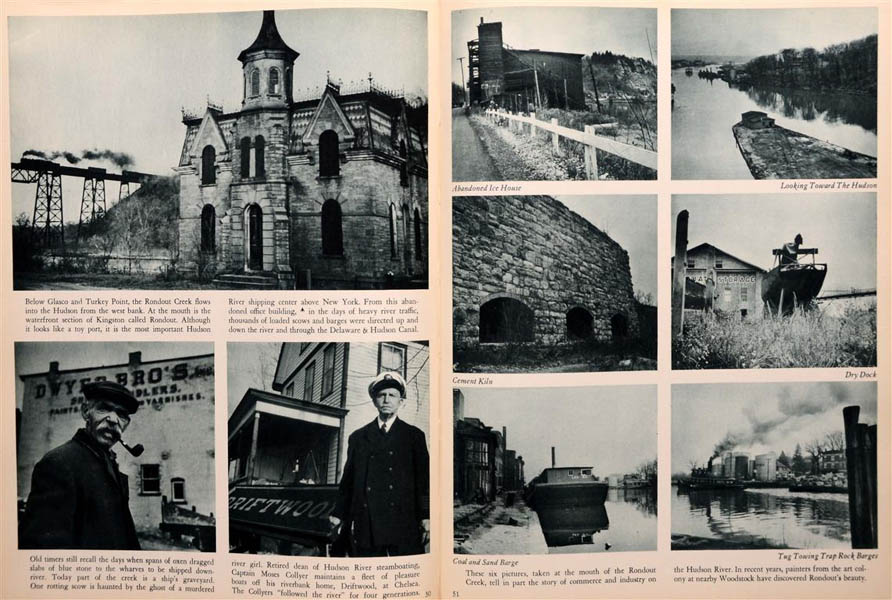
Great River of the Mountains: The Hudson. ~ Bowen, Croswell. Hastings House (New York). 1941.
Current price range on www.abe.com: $15.00~$497.54.
Twenty years before John Reed, Croswell Bowen, a freelance magazine writer who later joined New Yorker magazine, traveled the length of the Hudson to conduct research in advance of Carl Carmer’s book for the Rivers of America series. This book is quite similar in approach and layout to The Hudson River Valley. But only hints of the river’s decline, already begun, are evident. One truly iconic photograph shows an abandoned Second Empire / High Victorian office building on the Rondout Creek in the foreground while a steam train mightily puffs its way across a high railroad trestle across the background. (In a few years the steam trains disappeared, but the office building not only is still standing but it has been restored as a house.) Glorious images of the steamer Alexander Hamilton plying the Hudson, and the Castkill Mountain House on a summer day, fronted by thirteen gleaming white columns built at the edge of a vast precipice, belie the fact that steamboat travel was just about done and that the Mountain House would shut its doors after one more season. Unlike John Reed, Bowen included photographs of the Hudson River folk, as they would form much of the subject matter of Carmer’s book. Paper mill workers, farmers at a horse auction, shad fishermen, locktenders and ship captains, and individuals from isolated ethnic groups also appear as the last of their kind, as their jobs have vanished or their cultural groups have assimilated.
A few years back Lucey Bowen, a daughter of Croswell, retraced her father’s journey. She re-took many of the same photographs as he did and then published them on her blog, Great River Revisited. She also reprinted his book with the proceeds donated to the Bannerman Castle Trust. I was fortunate that she contacted me and informed me of her project. We later met at a presentation Tom Rinaldi and I delivered at the formerly abandoned Bronson house in Hudson, NY, where Lucey gave me a copy of her father’s book, inscribed:
“For the Irvings
with the full knowledge
that there will never
be anyone that will
equal the works their
distinguished ancestor did
on the Hudson
June 26, 1941 Croswell Bowen.”
So now I’ve got in my library a little treasure that links me to two other authors who have chronicled the Hudson!
Sample Text:
“Below Glasco and Turkey Point, the Rondout Creek flows into the Hudson from the west bank. At the mouth is the waterfront section of Kinsgton called Rondout. Although it looks like a toy port, it is the most important Hudson River shipping center above New York. From this abandoned office building, in the days of heavy river traffic, thousands of loaded scows and barges were directed up and down the river and through the Delaware & Hudson Canal. Old timers still recall the days when spans of oxen dragged slabs of blue stone to the wharves to be shipped downriver. Today part of the creek is a ship’s graveyard. One rotting scow is haunted by the ghost of a murdered river girl. ”
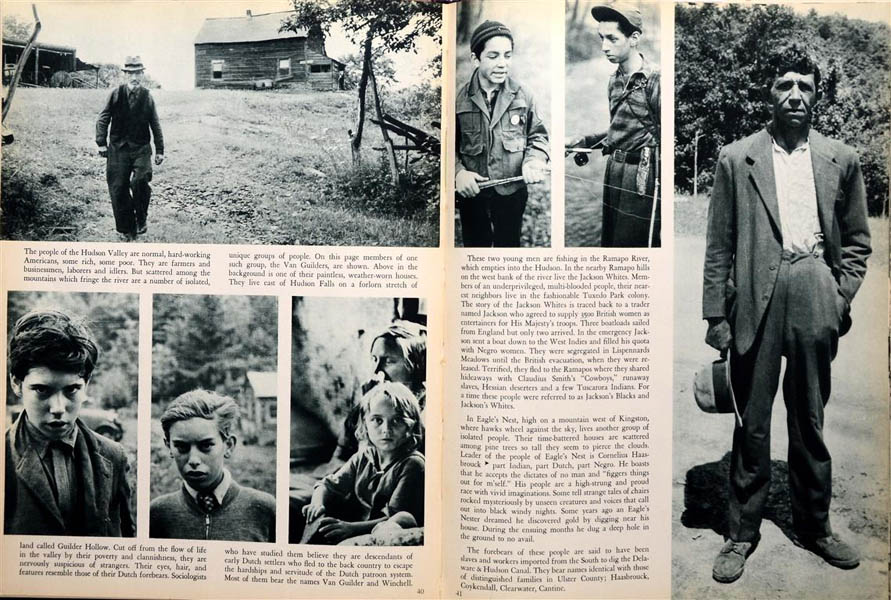
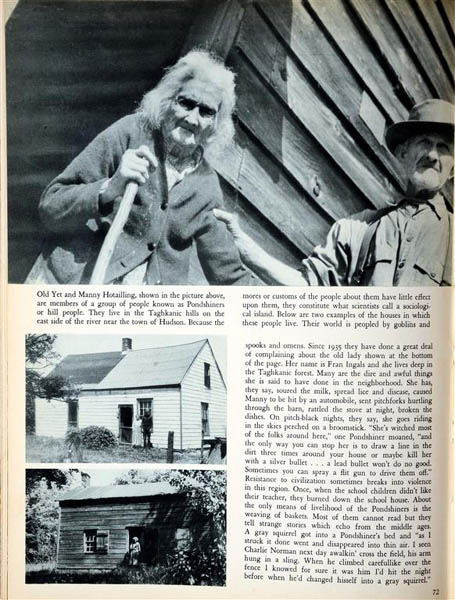
Some of the isolated ethnic groups that Croswell Bowen photographed.
Carl Carmer had more to say in his book, and I will get to that in a minute. Like the factories and jobs that have disappeared from the valley, so too have some of these unique groups of people. One memorable spring day, June 17, 2005, Tom Rinaldi and I crossed Columbia County with County Historian Mary Howell in search of abandoned buildings. We also poked around the vicinity of a hamlet known as Snyderville in search of the Pondshiners, an old group of basketmakers plagued by problems that were blamed on witches within the community. We bounded down some back road and saw some low houses that might have been indicative of poverty, but I also recall seeing satellite dishes and fairly decent automobiles (them’s priorities). At the end of the road were two huge pillars and a closed iron gate, a sign that even the wealthy were comfortable enough to live back here now. I didn’t take any photos and none of us were bold enough to knock on doors and ask if anyone was a Pondshiner, so we saw no witches that day.
_______________________________________________________________________
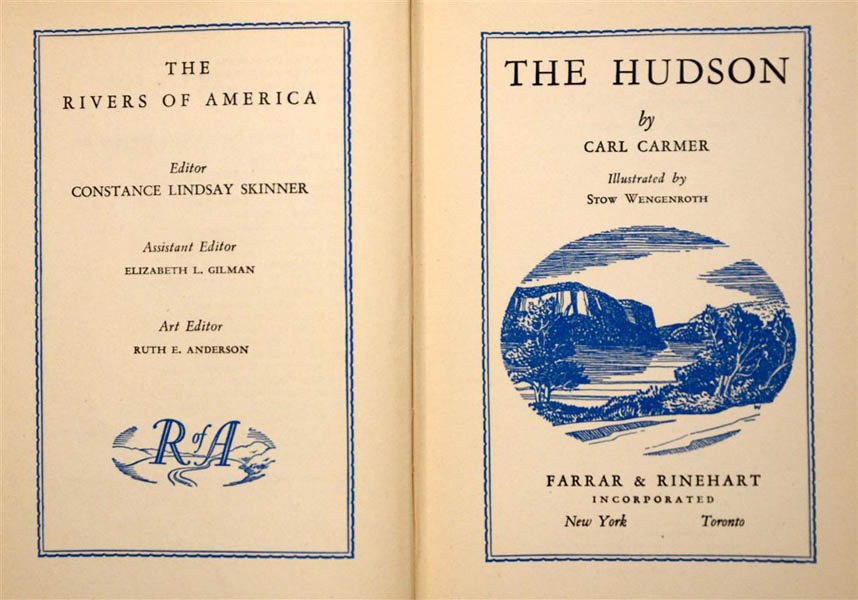
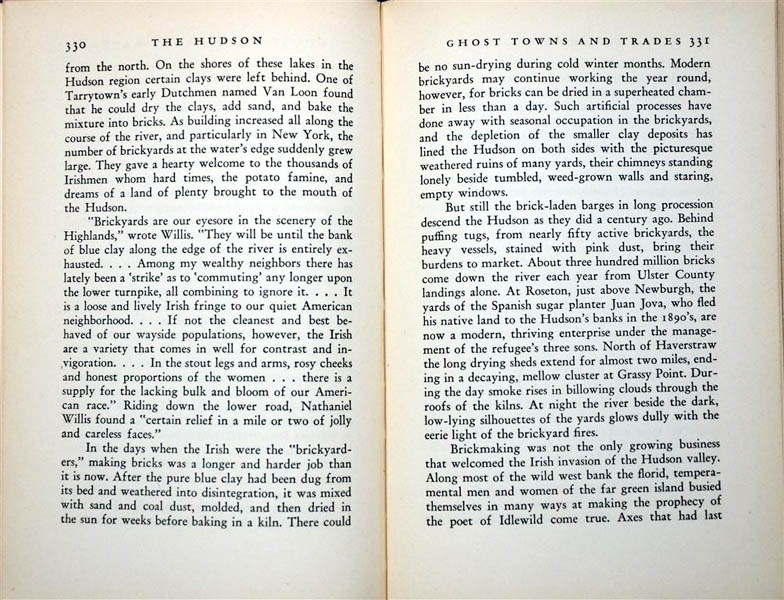
The Hudson. ~ Carmer, Carl.: Farrar & Rinehart, 1939.
Current price range on www.abe.com: $3.79~$747.54.
This might be the definitive book that provides a historical sense of place for the Hudson River Valley. In thirty-five vignettes, Carmer tells the story of the Hudson River from its discovery and colonization by Europeans to the twentieth-century institutionalization of its riverfront lands. As one reviewer put it, “Carmer has the faculty of breathing the breath of life into dead bones,” be it from the bones of “drunken and profane frontiersmen” of the New Netherland colony, or from the bones of failed utopian colonies, or shuttered brickyards.
Significant events recalled include the fatal steamboat race which took the life of Andrew Jackson Downing, the great “tastemaker” of American landscape design aesthetic, and the Tin Horn rebellion, an anti-rent protest led by the the “calico Indian” named Big Thunder (actually a young physician named Smith Boughton).
Carmer also quoted Charles Fenno Hoffman: “What though no cloister grey nor ivied column / Along these cliffs their sombre ruins rear?” and told us that Thomas Cole was forced to work imagined ruins into his otherwise detailed paintings of Hudson River landscapes, but a century later there were the ruins of tanneries and icehouses to tell the stories of the valley’s “ghost trades.”
Carmer himself joined the stories when he investigated the “sociological island” communities that existed “back of the brickworks and cement factories” – the Jackson Whites (said to be of mixed Native American / African-American / Dutch ancestry); the “B’ys from the Traps” and the “Pondshiners” or “Bushwhackers”, people who believed themselves to be witched by those within their own communities. Carmer trekked through sumac and berrybushes and tangles of vine to visit an old woman with a wrinkled wizened face, blue eyes that “burned with a fierceness that contrasted shockingly with her dead-white hair that hung in ragged short cascades around her neck.” From within her cabin of thick boards weathered dark grey she told Carmer that the “well-fixed feller” and his like who accused her of witchcraft were just a bunch of “hard drinkers and card players” likely to get into their own trouble. Maybe there never were any witches after all.
Vaughn G. Aylward, a former Hudson Valley resident now living in Arizona, sent me a copy of Carmer’s book as a donation to my library. The copy he found in a thrift shop once belonged to David T. Des Biens.
Sample Text:
“In the days when the Irish were the “brickyarders,” making bricks was a longer and harder job than it is now. After the pure blue clay had been dug from its bed and weathered into disintegration, it was mixed with sand and coal dust, molded, and then dried in the sun for weeks before baking in a kiln. There could be no sun-drying in the cold winter months. Modern brickyards may continue working the year-round, however, for bricks can be dried in a superheated chamber in less than a day. Such artificial processes have done away with seasonal occupation in the brickyards, and the depletion of the smaller clay deposits has lined the Hudson on both sides with the picturesque weathered ruins of many yards, their chimneys standing lonely beside tumbled, weed-grown walls and staring, empty windows.
But still the brick-laden barges in long-procession descend the Hudson as they did a century ago. Behind puffing tugs, from nearly fifty active brickyards, they heavy vessels, stained with pink dust, bring their burdens to market. About three hundred million bricks come down the river each year from Ulster County landings alone. At Roseton, just above Newburgh, the yards of the Spanish sugar planter Juan Jova, who fled his native land to the Hudson’s banks in the 1890’s, are now a modern, thriving enterprise under the management of the refugee’s three sons. North of Haverstraw the long drying sheds extend for almost two miles, ending in a decaying, mellow cluster at Grassy Point. During the day smoke rises in billowing clouds through the roofs of the kilns. At night the river beside the dark, low-lying silhouettes of the yards glows dully with the eerie light of the brickyard fires..” (Page 330-1).
_______________________________________________________________________
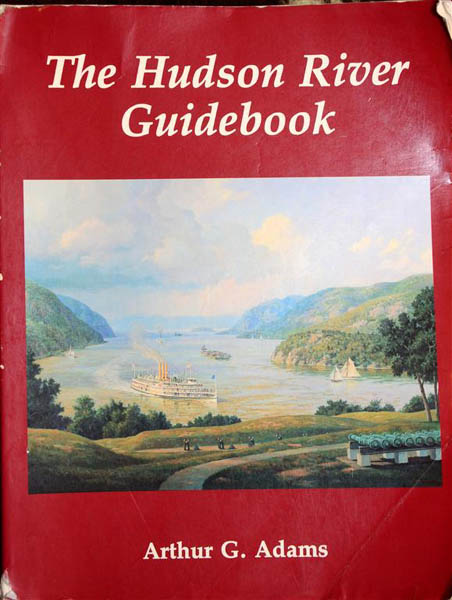
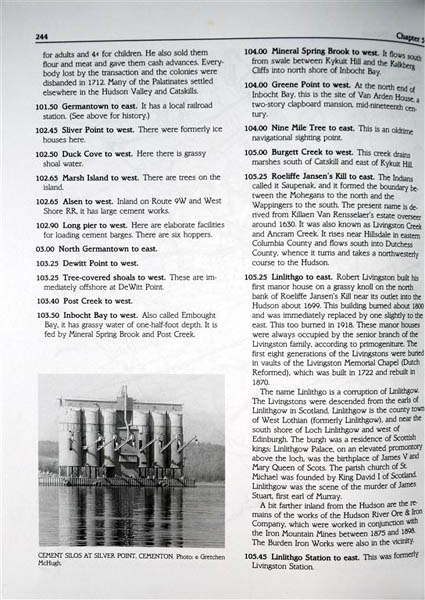
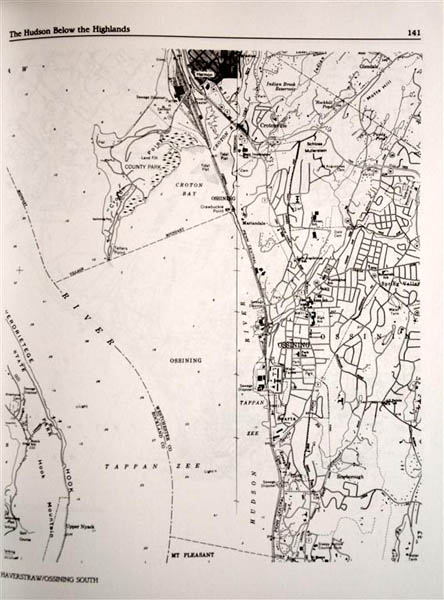
The Hudson River Guidebook. ~ Adams, Arthur G.: Fordham University Press, 1996.
Link to buy book
Arthur Adams’s Hudson River Guidebook was in the car for every trip Tom and I took in search of ruins and old buildings, usually paired with a now-beaten and snow-slush-wrinkled copy of Jimapco Hudson Valley Atlas and that map of Albany and Rensselaer Counties that some lady at a gas station in Sand Lake or somewhere just gave us. Following in the traditions of the nineteenth and early twentieth century travel guides to the Hudson that were once abundant, Adams describes the river and shorelines point by point with emphasis on points visible from the Hudson. The text also outlines self-guiding road routes along both shores. Like John Reed and Croswell Bowen, Adams pays close attention to New York City, often left out of most contemporary definitions of the Hudson River Valley – it isn’t until page 120 that his journey reaches Westchester County. But up the river he continues, providing almost equal historical background to places little known as he does to those more often written-about. The endless array of of unique and foreign-sounding place names made me want to go and see what was all about Ponckhockie, Coxsackie, and Coeymans. Indeed, it is in the sleepy, out-of-the-way river landings that one might find better examples of nineteenth century river architecture than in the big towns where “Urban Renewal” in the 1970s and present-day “Waterfront Revitalization” have done away with historic buildings. The accompanying topographic maps also helped us find ruins and factories, or provided evidence of buildings that no longer exist. At Brickyard Road in Stockport (Columbia County), there is a spur off the road to the Empire Brickyard dotted with six, well, dots that likely represent a street of workers’ housing. Today there is an empty field. I would very much like to see what once stood there.
Arthur Adams is a Hudson River legend, as much part of the subjects he wrote about, and a possessor of a wide array of knowledge of the river’s history. His books are interspersed with tales of riding steamboats on the Hudson and taking the last passenger train on the West Shore line out of the formerly-abandoned-and-now-restored railroad station in Newburgh – doing things you can’t do anymore. We had a nice lengthy chat after he kindly reviewed our manuscript (I had made his acquaintance some years before at Philipsburg Manor where I probably greeted him with rock-star adulation, haha) and he told me of having met while in college Rockefellers and about the wealth they had and the influence they wielded, among other interesting stories.
Sample Text:
“127.50 Coeymans to west
Pronounced “queemans,” it was settled in 1673 by Barent Pieterse Coeymans. It is a typical sleepy old Dutch river town and is well described by James Fenimore Cooper, under the name of Willow Cove, in his novel Miles Wallingford. This was once a major ice-cutting center. The Sutton & Suderly brick plant is still active.” (Page 256-7).
_______________________________________________________________________
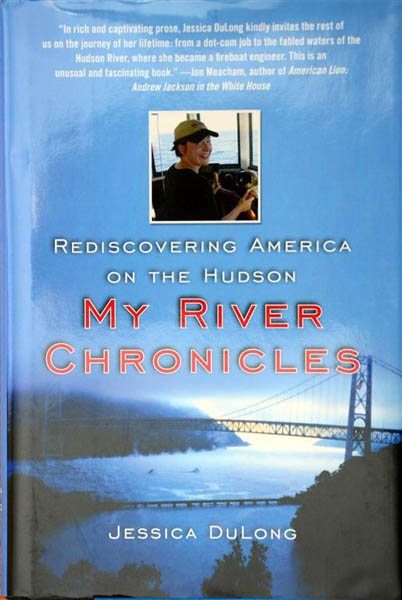
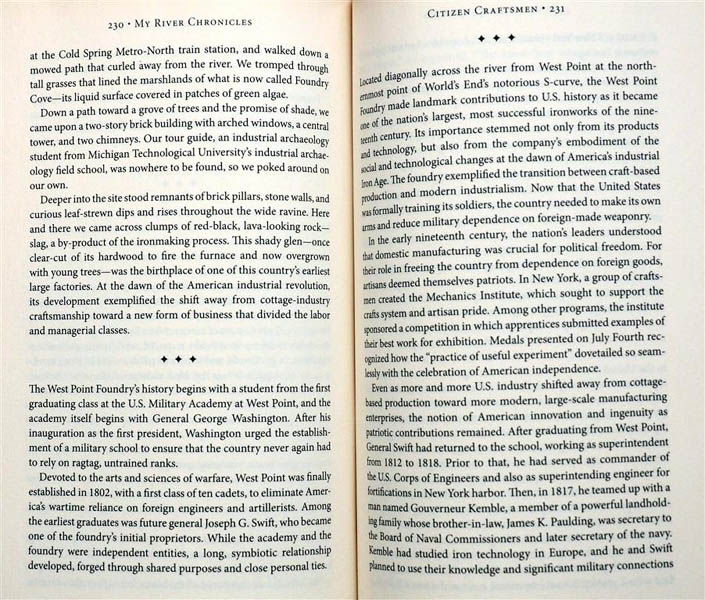
My River Chronicles: Rediscovering America on the Hudson. ~ DuLong, Jessica. Free Press, 2009
Link to buy book
Jessica DuLong’s chronicle of the Hudson weaves in personal narratives of her experience engineering a fireboat, an interest that became her passion after 9/11, alongside essays about current states-of-affairs on the Hudson represented by people who also seemed to have cornered the markets of their unique occupations and passions.
The story of the book however is still DuLong’s story, and being the only woman in a field of work typically and almost entirely filled by men produced many awkward, uncomfortable and outright sexist experiences. An unfortunately memorable exchange occurred with a classroom instructor (and owner of the training school, it turns out) who kept calling on DuLong for answers, despite her protestations to call on the male students too. She eventually scored among the highest marks in the class, but it doesn’t minimize the unfortunate reality that guys like this still hold positions of power and influence.
However much interference she received, DuLong persisted and found much joy in her new occupation, including sharing a day on the Rondout Creek with first-graders who launched their own little wooden boats off onto the river for voyages unknown and endless.
It is also quite humbling that DuLong chose to include Tom Rinaldi and myself in the conversation of preserving the Yonkers Power Station, “one of the most significant turn-of-the-century industrial structures still remaining on the Hudson” and part of our larger study of Hudson Valley Ruins. An honor too, to be mentioned alongside others who are also studying the Hudson Valley and are documenting it in their own unique manner – including Elizabeth Norris who, with Michigan Technological University, excavated the ruins of the West Point Foundry in Cold Spring, and Stephen Fox, who paints the nocturnal Hudson River landscape, and Mark Peckham of the New York State Historic Preservation Office who explores and maps underwater shipwrecks and builds his own boats.
Jessica sent along a copy of her book inscribed with a note of respect and gratitude. It was really our pleasure to spend a fun spring day in 2008 roaming around Yonkers with her and talking with people we met on the streets outside various abandoned buildings.
Sample Text:
“As I walk around the foundry site, I do smell the dirt. Here and there, among the growth saplings in the glen, students work alone or in pairs, fussing about in their holes, using trowels, dustpans, and whisk brooms like you’d see beside a fireplace. Most of this year’s heavy digging has already been completed. Tape measures stretched along a short side of each hole help students track the positions of features they are examining – the remains of brick walls, iron pipes, or other structures and artifacts they have found. Already today a student has discovered a clay smoking-pipe etched with the words “Home Rule.” The slogan, a battle cry for self-government, offers evidence of the Irish who worked here when the foundry’s twenty-four hour operations made this peaceful patch of woods a noisy, smoky, busy factory. Standing in the sun-dappled gorge, I try to imagine the place that nineteenth-century author Benson Lossing encountered during his visit in the 1860s.” (Page 236).
_______________________________________________________________________
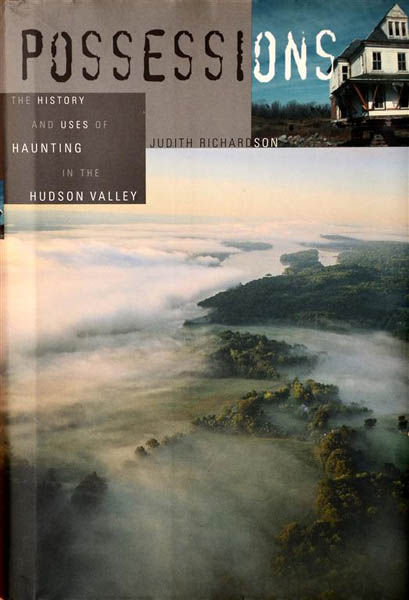
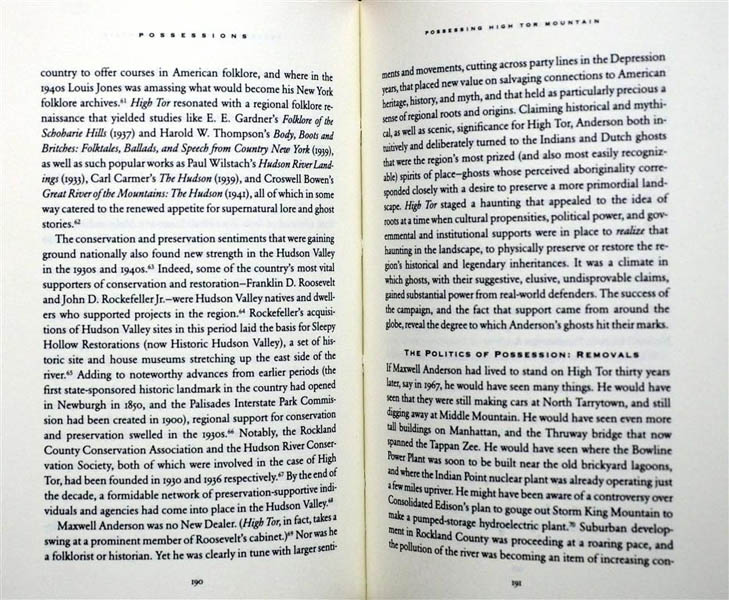
Possessions: The History and Uses of Hauntings in the Hudson Valley. ~ Richardson, Judith.: Harvard University Press, 2003.
Link to buy book
I like Judith Richardsons’s Possessions because it is not the usual haunted house book (“This house is abandoned. People see flickering lights in the windows at night. It must be haunted!”) but because it attaches meaning to the stories of haunting within the context of social and cultural matters of the times. The book covers the full range of tales of European occupation of the Hudson Valley, and weaves in world-famous and locally-known tales. Washington Irving’s Headless Horseman and other ghostly apparitions address the “dilemma of identity – a sense of alienation, dividedness and uncertainty” that affected Irving personally and the young nation at large, while Irving helped create a uniquely American identity and folklore that all could agree on. 19th century variations of a ghost tale in Leeds (Greene County) express gender and racial undercurrents. Maxwell Anderson’s play High Tor intersects with the nascent environmental conservation movement of the 1930s against a scale of industrialization unprecedented in the Hudson Valley. T. Coraghessan Boyle’s 1987 novel World’s End attempts to discover what it is that continues to haunt Peterskill (Peekskill).
Published while Tom Rinaldi and I were hard at work on the book version of Hudson Valley Ruins, Tom gifted me a copy with a postcard (Thomas Cole: Italian Coast Scene with Ruined Tower) note of encouragement ten months before our own manuscript was due at the publisher.
Sample Text:
“Certainly, the response (Maxwell Anderson’s theatrical play) High Tor engendered had to do with a sense of heightened endangerment from the quarrying industry, the most obviously destructive of the industrial activities that took place in the region., and one that had therefore become the most conservation-provocative bogey in the early twentieth century. Yet scenic or historical value had not prevented quarrying at other mountains along the river. If the outcome of this case seems inevitable, if it seems natural that such storied places should warrant physical preservation, this sensibility is in large part one that developed in the period in which High Tor appeared on stage. At the turn of the century, Tarrytown historian Edgar Mayhew Bacon had lamented that his town was not foresighted enough to even preserve the “Katrina Van Tassel” house, knocking it down to build a new high school on the property; at that time, not even (Washington) Irving’s stamp guaranteed preservation.” (Page 188).
_______________________________________________________________________
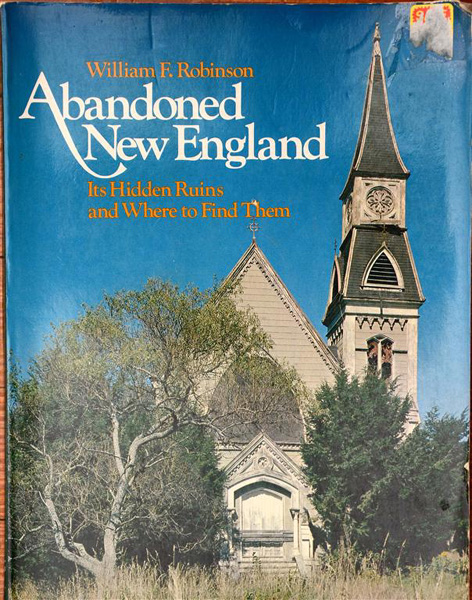
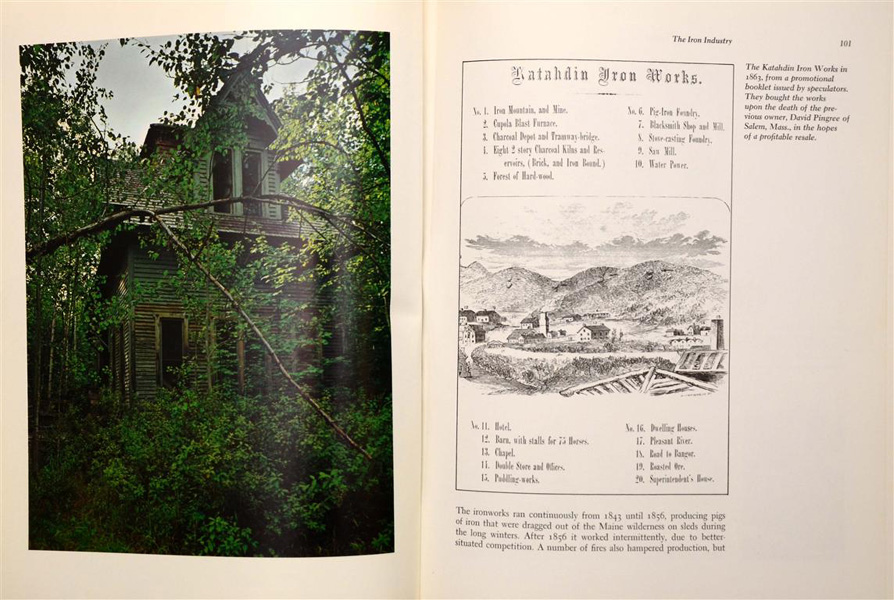
Abandoned New England: Its Hidden Ruins and How to Find Them. ~ Robinson, William F.: New York Graphic Society, 1976.
Current price range on www.abe.com: $3.01~$63.00.
I’m going to include this book honorarily, as a sort of “bonus track” here. I think this text was more influential to Tom than to I, but I value its place on my bookshelf very much and often return to it to admire the photographs of weathered wooden ruins of New England antiquity. The book is divided into chapters by specific industries whose rise and fall are told in the contexts of population shifts and technological advances. The histories of each site are presented with explanations of the workings of the various factories, before ending with wistful descriptions of forlorn ruins in their then-present condition.
Ruins presented here include town pounds, iron works, textile mills, mountaintop resorts, ropewalks, and other notable and unique elements of the region. Although a bit dated (Abandoned New England preceded the golden age of abandoned state hospitals and asylums by about 25 years), it remains a timeless prime example of how to write a book about ruins.
Sample Text:
“A dozen miles away in Carolina, the desolation is even larger. This hamlet, whose cotton mill began operating in 1841, was built on the Slater System,with everything owned by the mill. Once the mill closed, the workers, unfettered by real estate holdings, left for better pastures. Outside the mill complex new homes have sprung up, but surrounding the falls still stand the original complex of mill buildings, warehouse and store, overseers’ houses, boardinghouses, and a little row of laborers’ duplexes.
Long ago the noise of the mill machinery filled the air of the village with a muffled humming sound, a soft and dreamy clatter. Today all is silent and empty as the mill, the homes and other buildings slowly crumble into the Rhode Island scrub.” (Page 122).
_______________________________________________________________________
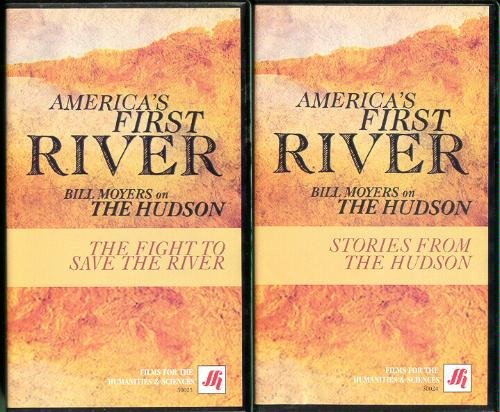
America’s First River: Bill Moyers On The Hudson. ~ PBS Broadcast, April 2002.
Current price range on www.amazon.com: About $79.00.
I end this post not with a book but with a video, out of print and only released on VHS. It premiered at the dawn of this millennium which was not timely just for neat numbers but because the Hudson River was at another turning point in its long and winding history. Decades of pollution had been reduced but not entirely eliminated from the river and waterfront land once relegated to factories and junkyards was highly sought-after by developers of massive luxury housing projects, which I think is not what Carl Carmer had in mind when he ended his book with a vision of a river reclaimed by its people.
The two-part video explored the people who helped popularize the Hudson and create the image of “America the Beautiful,” such as Thomas Cole and the iconic landscapes he painted of and from, as well as the forces that nearly destroyed the river. The heroes in this tale are people like Fred Danback, an employee of the Anaconda Wire and Cable Company factory in Hastings-on-Hudson. Danback reported pollution to his bosses but they ignored him as pollution laws were not enforced by industry-friendly regulators. Danback persisted in his documentation of factory pollution and with the Hudson River Fishermen’s Association cited an old navigational act that the court system upheld to fine Anaconda $200,000, a large financial and even larger symbolic statement.
This program premiered on PBS the very week that Tom Rinaldi and I mailed our first book proposal to a publisher (who did not accept, ahem. Their loss.) We shared a mix of disbelief and encouragement regarding the coverage granted to several ruins in this PBS special. The host was granted access to the abandoned-but-secured Anaconda factory in Hastings-on-Hudson (previously off limits to us). And as if in tune to what Tom and I were formulating for our book, Bill Moyers and Roger Panetta summarized the topics of the show and the future of the Hudson River while standing next the ivy-covered walls and in the shadows of the smokestacks of the Yonkers Power Station, one of our most important ruins. If we were not yet ready then to extend our thoughts on a national broadcast program (not that we were asked anyway), we knew we were at least well on our way to producing a book that would be a timely, and hopefully long-lasting, contribution to the Hudson Valley canon, if I may say so.
Sample Quote:
BILL MOYERS: What was this?
ROGER PANETTA: This was the New York Central Yonkers Power Substation. It was built between 1896 and about 1906. And it housed the turbines which generated power for this whole section of the New York Central Railroad
BILL MOYERS: Well, this looks as if it were just left to die.
ROGER PANETTA: Yes. And when I look at this scene, it reminds me of one of the last in the series of paintings by Thomas Cole in the Course of Empire. In the last one, there’s a single classical column in which a vine is beginning to grow back over what is essentially the ruins of the great city. And I look at this, and this tells me that we’re really at a junction, a transition, between the old industrial Hudson and a different kind of Hudson. The question is: What are we going to do with this site and many other sites like that along the Hudson? And those are issues which all of these river communities are dealing with. And given the endurance of this first decision…this is a hundred-year decision we’re looking at.” (http://www.pbs.org/now/science/HUDSON2.pdf, Page 22).
_______________________________________________________________
Thank you Ty, for inspiring this post.
